




The 56th Winter Season is presented in loving memory of Joan K. Jacobs.
JOE LOVANO’S PARAMOUNT QUARTET
featuring Julian Lage, Asante Santi Debriano, and Will Calhoun
FRIDAY, APRIL 11, 2025 · 7:30 PM Jazz Series
LUCAS DEBARGUE,* piano
THURSDAY, APRIL 17, 2025 · 7:30 PM Piano Series
JESS CRAMP*:
THE UNTOLD STORY OF SHARKS
THURSDAY, APRIL 24, 2025 · 7:30 PM Speaker Series
AMERICAN PATCHWORK QUARTET*
FRIDAY, APRIL 25, 2025 · 6 PM & 8:30 PM Concerts @ The JAI
ANNE-SOPHIE MUTTER, violin
YEFIM BRONFMAN, piano PABLO FERRÁNDEZ, cello
SATURDAY, MAY 3, 2025 · 7:30 PM
Revelle Chamber Music Series · Balboa Theatre
LUCKY DIAZ
SATURDAY, MAY 10, 2025 · 10 AM & 11:30 AM ConRAD Kids Series · The JAI
CAMERON CARPENTER*, organ
FRIDAY, MAY 16, 2025 · 7:30 PM Special Event
St. James by-the-Sea Episcopal Church
CAMERON CARPENTER, organ METROPOLIS
SATURDAY, MAY 17, 2025 · 7:30 PM
ProtoStar Innovative Series
St. James by-the-Sea Episcopal Church
LOUIS: A Silent Film with Live Musical Performance by WYNTON MARSALIS AND CECILE LICAD
SUNDAY, MAY 18, 2025 · 7 PM Jazz Series · Balboa Theatre
SHEKU KANNEH-MASON, cello & ISATA KANNEH-MASON, piano
SATURDAY, MAY 31, 2025 · 7:30 PM
Recital Series
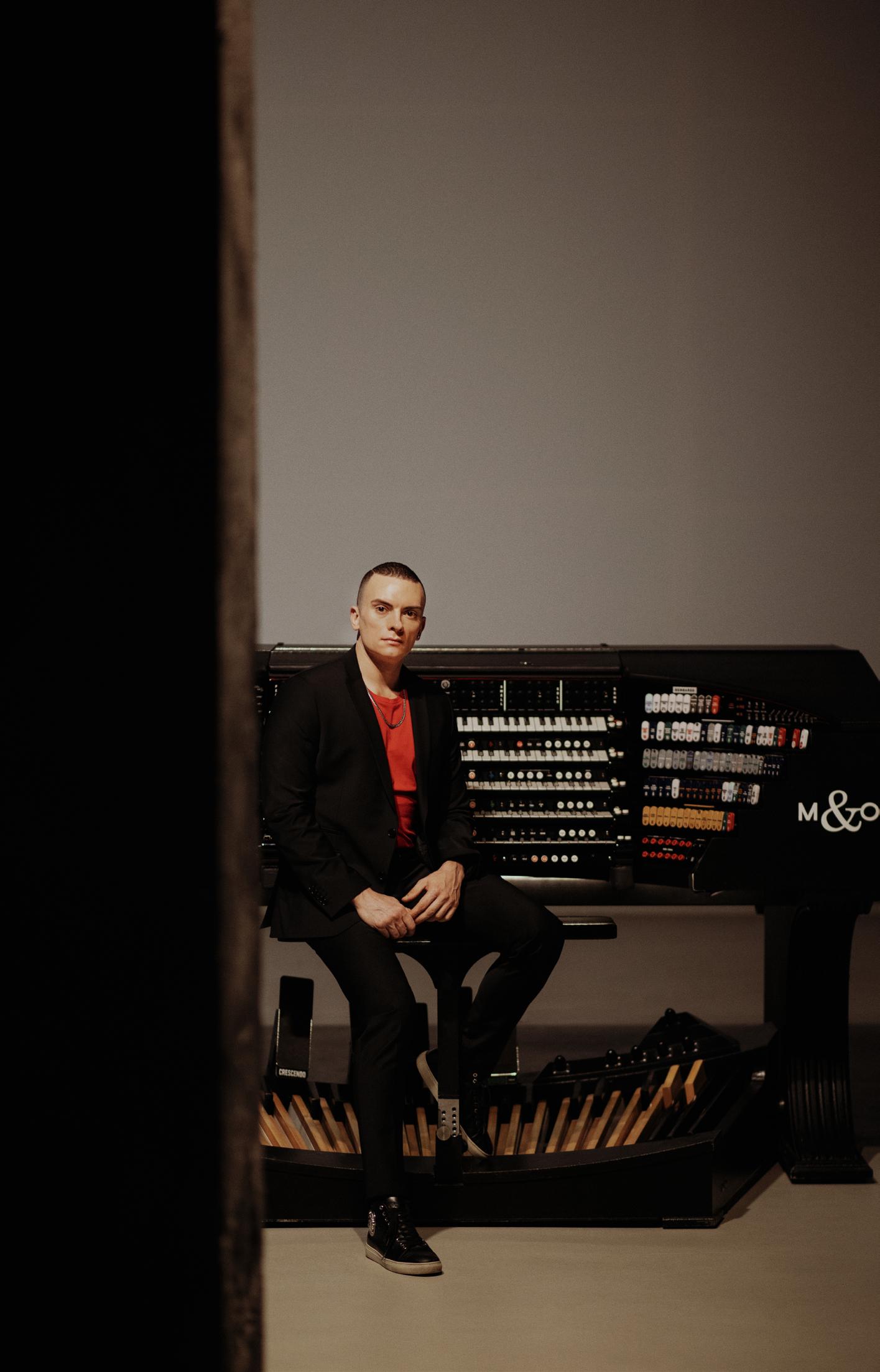
TRES SOULS*
SUNDAY, JUNE 1, 2025 · 5 PM & 7:30 PM Concerts @ The JAI
JAEMIN HAN*, cello
SUNDAY, JUNE 15, 2025 · 3 PM Discovery Series
*LJMS debut


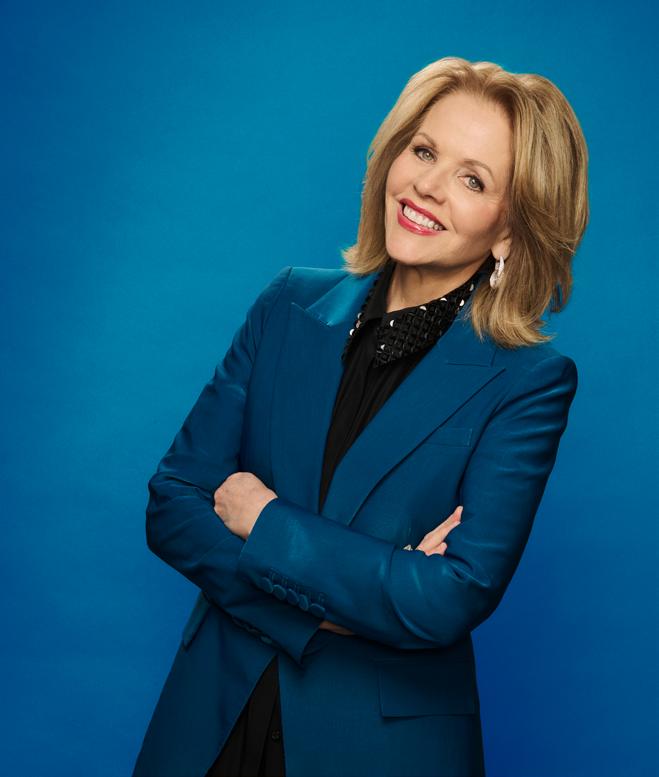




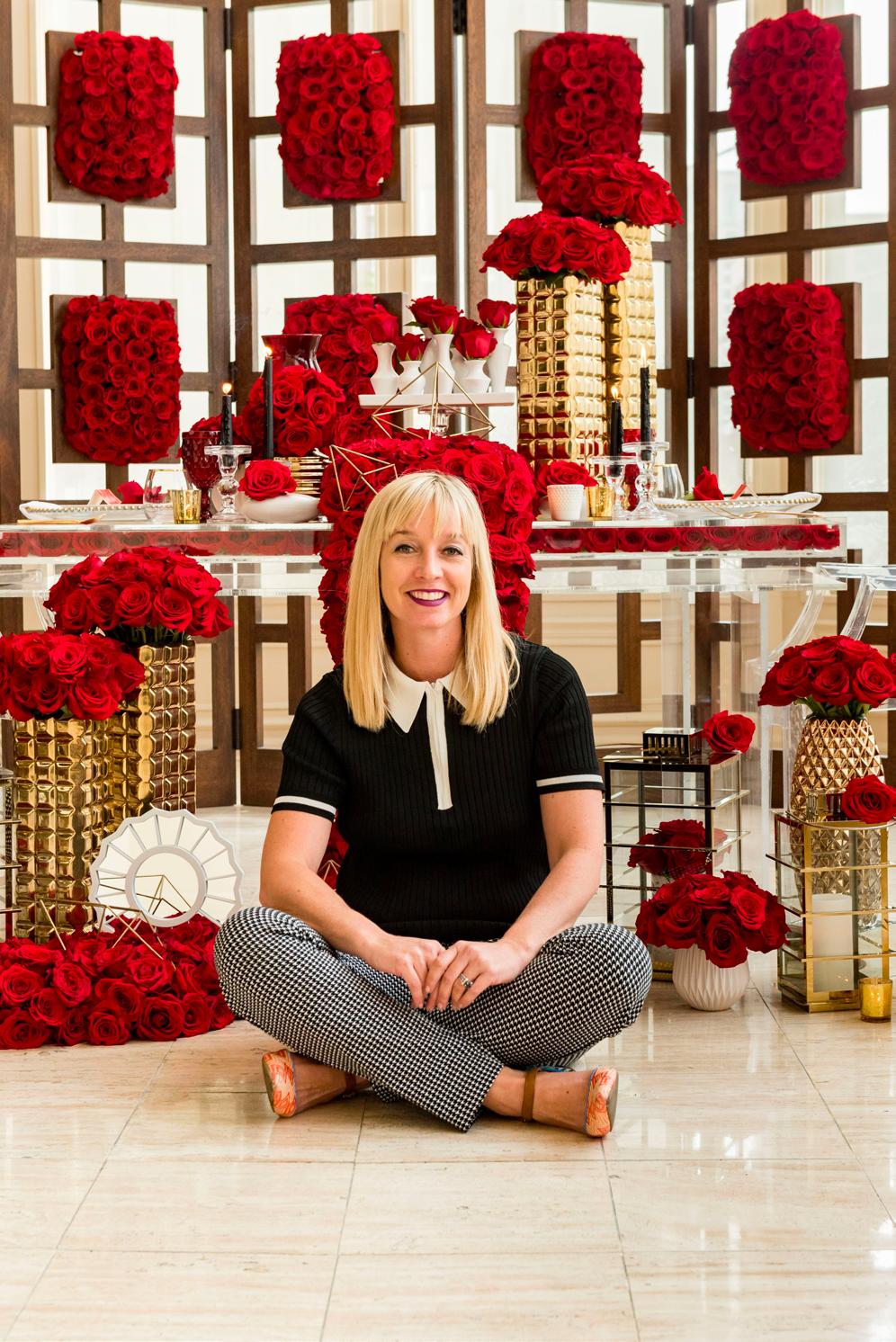


Every day, business owners, entrepreneurs, executives and community leaders are being empowered by Banc of California to reach their dreams and strengthen our economy. With more than $10 billion in assets and over 30 banking locations throughout the state, we are large enough to meet your banking needs, yet small enough to serve you well. Learn more about how we’re empowering California through its diverse businesses, entrepreneurs and communities at bancofcal.com


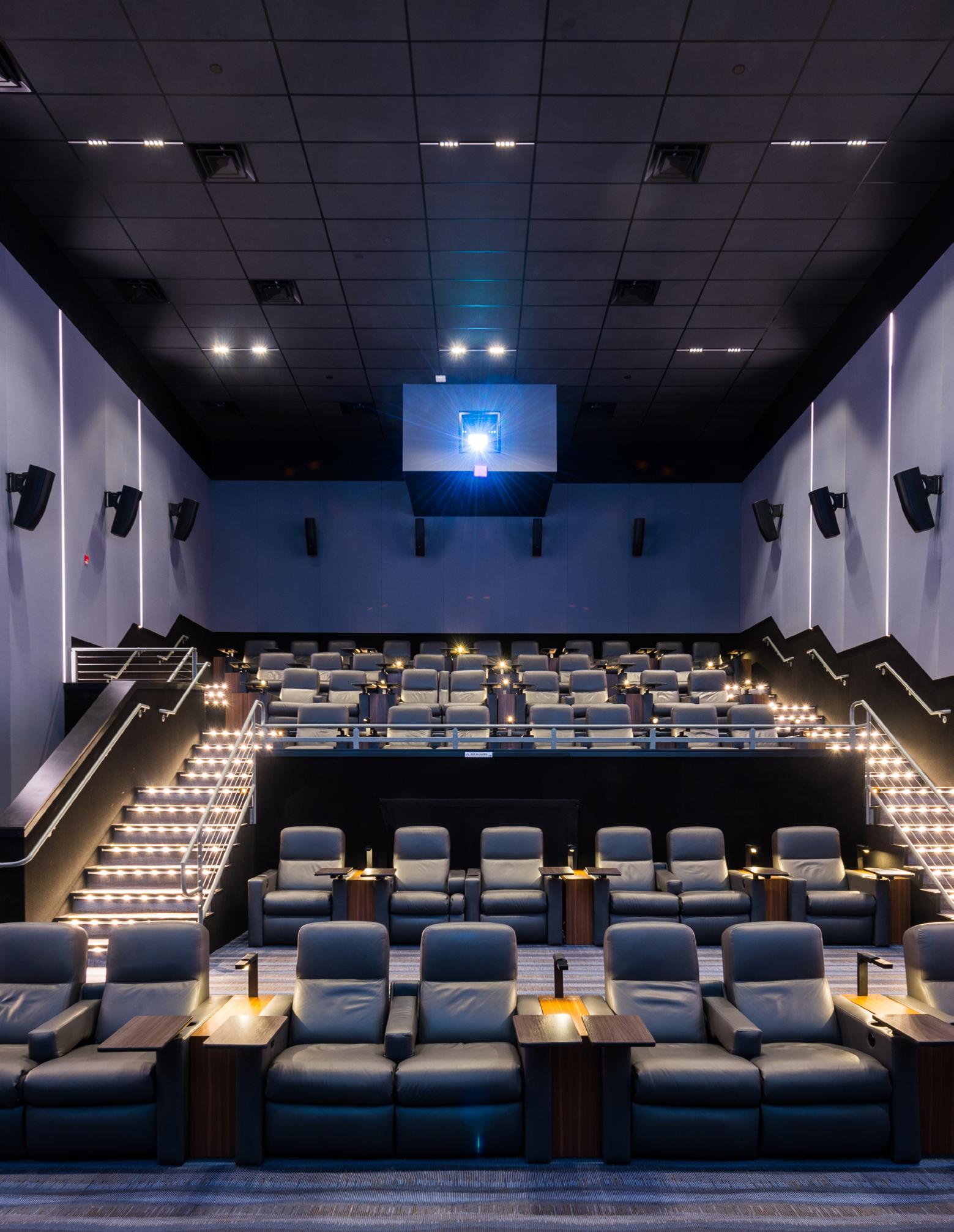







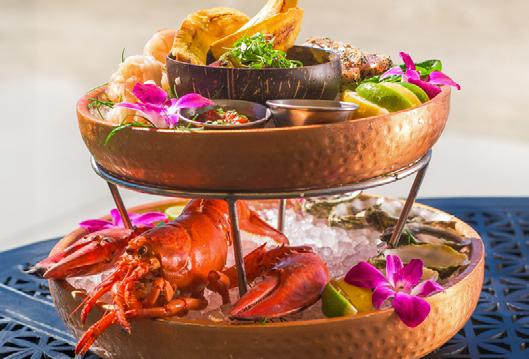

Our gratitude to these Medallion Society Pillars founding members who have made significant four-year commitments that will help us better serve all of the San Diego region. The Conrad can be a catalyst to bring thousands of adults and children together through a common appreciation of the performing arts, which enhance the artistic fabric of our community.

$1 MILLION and above
Brenda Baker and Steve Baum
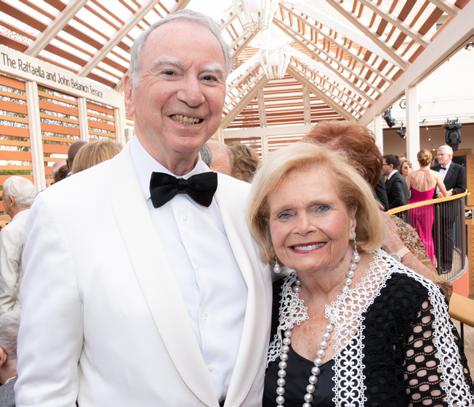
$1 MILLION and above
Irwin and Joan* Jacobs

$500,000 and above
Dorothea Laub
$500,000 and above
Karen and Kit Sickels

$400,000 and above
Raffaella and John* Belanich

$400,000 and above
Eleanor and Ric Charlton
$400,000 and above

Mary Ellen Clark
$400,000 and above
Jacqueline and Jean-Luc Robert

$400,000 and above
Debbie Turner
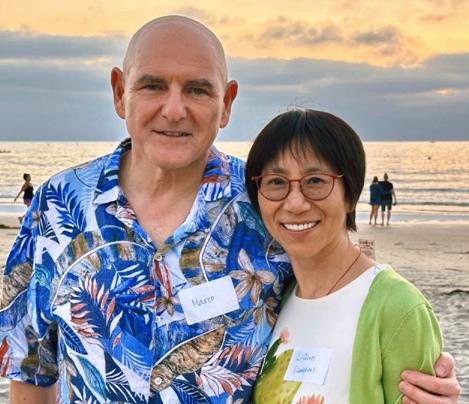
$400,000 and above
Marco Londei and Liqun Wang

$200,000 and above
Keith and Helen Kim

$200,000 and above
Haeyoung Kong Tang


$200,000 and above
Julie and Bert Cornelison

$200,000 and above
Angel and Fred Kleinbub
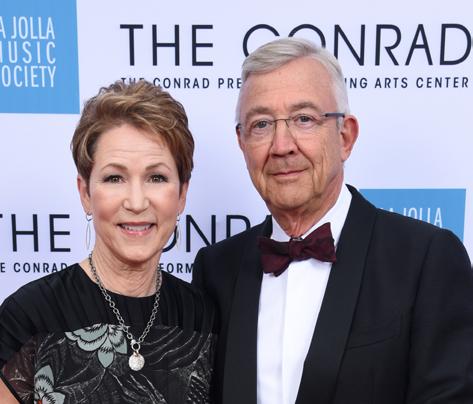
$200,000 and above
Sue and Peter Wagener
$200,000 and above
Herbert Solomon and Elaine Galinson
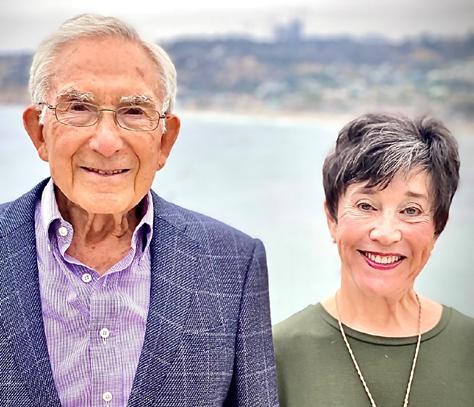

$200,000 and above
Vivian Lim and Joseph Wong


From classical, jazz, and dance to global music, exciting speakers, and family concerts, each season Artistic Director Leah Rosenthal brings the best artists in the world to the San Diego community. This season will feature more than 60 artists, including superstars like Wynton Marsalis, Joyce DiDonato, Yunchan Lim, AÍda Cuevas, London Symphony Orchestra, Martha Graham Dance Company, Hélène Grimaud, Sheku Kanneh-Mason, Isata Kanneh-Mason, Anne-Sophie Mutter, Yefim Bronfman, Twyla Tharp Dance, Zakir Hussain, Spanish Harlem Orchestra, Kodo, an Encanto sing-along, and many more.
La Jolla Music Society’s acclaimed chamber music festival, SummerFest, curated by award-winning pianist and festival Music Director Inon Barnatan, engages more than 80 of the world’s finest musicians to perform at The Conrad throughout the month of August. In addition to remarkable mainstage performances, SummerFest offers over 50 free and open-to-the-public educational activities. To learn more, visit TheConrad.org/SummerFest.
The Conrad opened in 2019 and serves as a gathering place for cultural, arts education, and community activity. As the permanent home of La Jolla Music Society, The Conrad hosts world-class performances presented by LJMS and other local arts organizations in its four outstanding performance and activity spaces, The Baker-Baum Concert Hall, The JAI, The Atkinson Room, and the picturesque Wu Tsai QRT.yrd.
La Jolla Music Society’s award-winning Learning and Engagement Programming provides unmatched access and learning opportunities to more than 11,000 students and community members throughout San Diego County annually. With learning and engagement at the heart of our mission, we work closely with each visiting artist and ensemble to create outreach activities that highlight their unique talents and
expertise at both The Conrad and in the community. With our state-of the-art video and streaming capabilities at The Conrad, we are able to provide live streaming for events such as our annual SummerFest and education events for free in our Digital Concert Hall.
The Conrad Prebys Performing Arts Center acknowledges the ancestral, unceded territory of the Kumeyaay people, on which The Conrad was built. We hold great respect for the land and the original people of the area where our performing arts center is located. The Kumeyaay continue to maintain their political sovereignty and cultural traditions as vital members of the San Diego community.
Personal listening and Hearing Assist is available through the “ListenWIFI” app, through your mobile device, or complimentary devices provided at our Concierge Desk.
Please visit https://theconrad.org/listening-assistance/ for details.

Vivian Lim – Chair
Bert Cornelison – Vice Chair
Mary Ellen Clark - Treasurer
Stacy Kellner Rosenberg - Secretary
Stephen L. Baum
David Belanich
Marla Bingham
Eleanor Y. Charlton
Ric Charlton
Sharon Cohen
Ellise Coit
Peter Cooper
Ann Parode Dynes
Jennifer Eve
Debby Fishburn
Stephen Gamp
Lehn Goetz
John Hesselink
Susan Hoehn
David Kabakoff
Nancy Linke Patton
Diana Lombrozo
Sue Major
Richard A. Norling
Arman Oruc
Tom Rasmussen
Sylvia Ré
Sheryl Scarano
Marge Schmale
Stephanie Stone
Debra Turner
H. Peter Wagener
Liqun Wang
Lise Wilson
Bebe L. Zigman
HONORARY DIRECTORS
Brenda Baker
Stephen L. Baum
Raffaella Belanich
Joy Frieman, Ph.D.
Irwin M. Jacobs
Joan Jacobs (1933—2024)
Lois Kohn (1924—2010)
Helene K. Kruger (1916—2019)
Conrad Prebys (1933—2016)
Peggy Preuss
Ellen Revelle (1910—2009)
Leigh P. Ryan, Esq.
Dolly Woo
Todd R. Schultz – President & CEO
Leah Rosenthal – Artistic Director
Inon Barnatan – SummerFest Music Director
ADMINISTRATION
Casey McEnelly – Director of Finance
Brady Stender – Controller
Breanne Self – Human Resources and Finance Manager
ARTISTIC & PRODUCTION
Grace Smith – Artistic Planning and Operations Director
Anne-Marie Dicce – Artistic Planning Manager
George Pritzker – Artistic Operations Coordinator
Juliet Zimmer – Artistic Rentals and Partnerships Director
Jamie Coyne – Director of Production
Caren Heintzelman – Assistant Production Manager
Lauren Cernik-Price – Production Coordinator & Stage Manager
John Tessmer – Lead Artist Liaison
Kaitlyn Thomas – Artist Liaison
Maggie de Lorimier - Artist Liaison
Eric Bromberger – Program Annotator
Jonnel Domilos – Piano Technician
FACILITIES & TECHNOLOGY
Tom Jones – Director of Facilities & Technology
Adam Wiebe – Technical Director
Tyler Merrihew – Technical Coordinator – Audio Lead
Bradlee Kingston – Technical Coordinator – Lighting Lead
Colin Dickson – Facilities Manager
Evan Calderon – Facilities Coordinator
Kim Chevallier – Security Supervisor
LEARNING & ENGAGEMENT
Allison Boles – Director of Learning & Engagement
Jade Lewenhaupt – Learning & Engagement Coordinator
Serafin Paredes – Community Music Center Director
Aimee Alvarado – Community Music Center Administrative Assistant
Community Music Center Instructors:
Juan Tomás Acosta, Marcus Cortez, Ian Lawrence, Sofia Magallanes
Marko Paul, Eduardo Ruiz, Juan Sanchez
DEVELOPMENT
Ferdinand Gasang – Director of Development
Anne Delleman – Development Manager
Wadeaa Jubran – Development Coordinator
Nicole Slavik – Special Events & Catering Director
Vivian Vu – Special Events Coordinator
MARKETING & TICKET SERVICES
Mary Cook – Director of Marketing
Stephanie Saad – Communications & Public Relations Director
David Silva – Marketing Manager
Cristal Salow – Data & Marketing Analysis Manager
Mariel Pillado – Graphic Designer
Marsi Bennion – Box Office & Guest Services Manager
Patrick Mayuyu – Box Office & Guest Services Assistant Manager
Kaitlin Barron Lupton – Box Office & Guest Services Lead Associate
Sam Crowley – Box Office & Guest Services Associate
Mitch Maker – Box Office & Guest Services Associate
Shaun Davis – House Manager
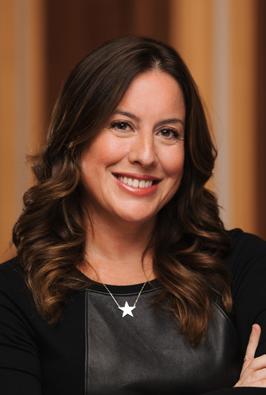
Dear Friends,
Thank you for being part of our 56th Winter Season, which will soon draw to a close in as spectacular a fashion as it began last fall. I’m so excited that you’ve decided to join us, whether it’s to take in the jazz stylings of Joe Lovano and his Paramount Quartet; the powerhouse trio of Anne-Sophie Mutter, Pablo Ferrández, and Yefim Bronfman; the return of the prodigious talented siblings Sheku Kanneh-Mason and Isata Kanneh-Mason; or the cello phenom Jaemin Han.
I’m especially excited to welcome Cameron Carpenter to La Jolla this spring. He’s the first organist to ever be nominated for a GRAMMY® Award for a solo album, a virtuosic composer and performer who is smashing the stereotypes of organ and classical music. Die Zeit newspaper called him “A fallen angel who gives the organ back its sin.” Who can resist a description like that? We are presenting him twice—first in a concert featuring great works by Bach, Franck, and Mussorgsky, and then in his own score composed to the classic silent film Metropolis These are not-to-be-missed opportunities to hear a master at his best.
And speaking of films, the great Wynton Marsalis, a friend of our company, is bringing a passion project to us in May. He and the renowned pianist Cecile Licad, along with a ten-piece all-star jazz ensemble, will be performing the score to Louis, a film from 2010 that is an homage to Louis Armstrong, Charlie Chaplin, and the birth of American music. Whether you’re a fan of Wynton’s or of Louis Armstrong—or both—you will want to be at the Balboa Theatre for this unique performance.
We’re not forgetting about the younger members of your family, either. The multitalented husband-and-wife team Lucky Diaz and Alisha Gaddis, who won a GRAMMY this year for their latest album, are the hottest thing in “kindie” music. Their performances at The JAI in May are perfect for elementary school-aged kids. And for children and adults of all ages who are fascinated by sharks, researcher and National Geographic Explorer Dr. Jess Cramp will be in the house to get us up close with these often misunderstood denizens of the deep to tell us why they are worthy of conservation efforts too.
As Summer approaches, you know what that means—it’s time to look ahead to SummerFest! Before we know it, we will be launching into four weeks of incredible programming curated by our Music Director, Inon Barnatan, who this year has chosen the theme of “Milestones.” Please take the time to pick up a SummerFest brochure and acquaint yourself with our many offerings this year. Among the highlights are the SummerFest debut of superstar soprano Renée Fleming, the return of jazz vocalist Cécile McLorin Salvant, composer Jessie Montgomery as Composer-inResidence, and a marvelous evening of percussive dance from Caleb Teicher and Nic Gareiss, both masters of this form. Plus, if you’re a fan of cooking shows, you won’t want to miss “Tasting Notes,” an evening of pairing wonderful classical music performances with cooking demonstrations curated by chef and cookbook author J. Kenji López-Alt. With all of this and more in store, you’ll want to secure your SummerFest tickets right away.
Thank you once again for your continued support and enthusiasm, which makes what we do so rewarding.
Sincerely,

Leah Rosenthal Artistic Director
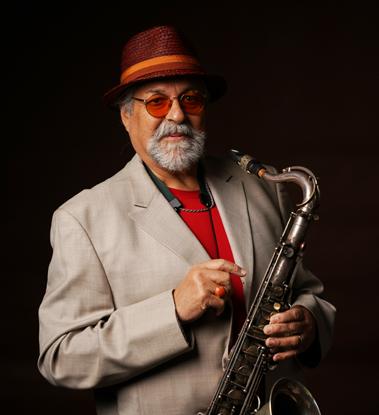
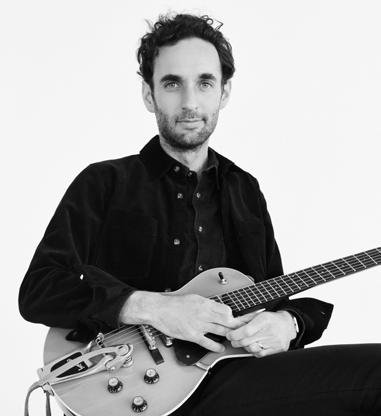
Hosted by
Robert John Hughes


FRIDAY, APRIL 11, 2025 • 7:30 PM
Joe Lovano, saxophone
Julian Lage, guitar
Asante Santi Debriano, bass
Will Calhoun, drums
Works to be announced from stage
THIS PERFORMANCE HAS NO INTERMISSION
La Jolla Music Society’s 2024–25 season is supported by The City of San Diego Commission for Arts and Culture, California Arts Council, County of San Diego, Prebys Foundation, The Lodge at Torrey Pines, ProtoStar Foundation, Vail Memorial Fund, Banc of California, ResMed Foundation, San Diego Theatres Foundation, Bright Events Rentals, Cafe Coyote, Rancho Coyote, GRNFC Hospitality Group, Ace Parking, Brenda Baker and Steve Baum, Raffaella and John Belanich, Gordon Brodfuehrer, Mary Ellen Clark, Bert and Julie Cornelison, Elaine Galinson and Herbert Solomon, Joan and Irwin Jacobs, Helen and Keith Kim, Angelina and Fred Kleinbub, Dorothea Laub, Vivian Lim and Joseph Wong, Jaqueline and Jean-Luc Robert, Jeanette Stevens, Haeyoung Kong Tang, Debra Turner, Sue and Peter Wagener, Liqun Wang and Marco Londei, Anna and Edward Yeung, Bebe and Marvin Zigman, and Anonymous.
GRAMMY Award-winning titan of jazz saxophone Joe Lovano and virtuoso guitarist Julian Lage have enjoyed a long journey of mutual artistic admiration. They first met in 1999 at Yoshi’s in Oakland, where Joe was performing with McCoy Tyner. Julian was then a child prodigy; his father brought him to the show and it was there he connected with Joe. They kept in touch through the years—even performing together at a private event—then reunited at Berklee College of Music. “I’ve always found him a natural, beautiful, expressive musician with maturity beyond his years,” Joe says of Julian. “He is someone I always knew I would collaborate with at some point and I’m so happy to have his contributions within the Paramount Quartet.”
Longtime Lovano collaborator Asante Santi Debriano, who first performed with Joe in the Archie Shepp Quartet in the 1980s, joins on bass. Drummer Will Calhoun (of Living Colour fame) called Joe to perform with him and Santi in a fundraiser last year for the Puerto Rican Relief Fund after the devastating hurricane. That explosive, creative set was the springboard leading to the idea of adding Julian and forming this new band, which debuted at the legendary Village Vanguard in February 2024.
This performance marks Paramount Quartet’s La Jolla Music Society debut.

Lecture by Michael Gerdes
THURSDAY, APRIL 17, 2025 • 7:30 PM
RAVEL
Jeux d’eau (1875–1937)
Sonatine
Modéré
Mouvement de menuet
Animé
FAURÉ
Mazurka in B-flat Major, Opus 32 (1845–1924)
Barcarolle No. 9 in A Minor, Opus 101
Nocturne No. 12 in E Minor, Opus 107
Impromptu No. 5 in F-sharp Minor, Opus 102
Valse caprice No. 4 in A-flat Major, Opus 62
INTERMISSION
LUCAS DEBARGUE
Suite in D Minor (b. 1982)
French Overture: Largo – Presto – Largo
Support for this program is provided by:
Elizabeth and Joseph Taft
La Jolla Music Society’s 2024–25 season is supported by The City of San Diego Commission for Arts and Culture, California Arts Council, County of San Diego, Prebys Foundation, The Lodge at Torrey Pines, ProtoStar Foundation, Vail Memorial Fund, Banc of California, ResMed Foundation, San Diego
Theatres Foundation, Bright Events Rentals, Cafe Coyote, Rancho Coyote, GRNFC Hospitality Group, Ace Parking, Brenda Baker and Steve Baum, Raffaella and John Belanich, Gordon Brodfuehrer, Mary Ellen Clark, Bert and Julie Cornelison, Elaine Galinson and Herbert Solomon, Joan and Irwin Jacobs, Helen and Keith Kim, Angelina and Fred Kleinbub, Dorothea Laub, Vivian Lim and Joseph Wong, Jaqueline and Jean-Luc Robert, Jeanette Stevens, Haeyoung Kong Tang, Debra Turner, Sue and Peter Wagener, Liqun Wang and Marco Londei, Anna and Edward Yeung, Bebe and Marvin Zigman, and Anonymous.
SCRIABIN
Pantomime: Tempo Giusto, poco grottesco
Sarabande: Senza rubato ma molto espressivo
War Minuet: Ben ritmato, buffo
Gigue: Prestissimo fanatico
Piano Sonata No. 3 in F-sharp Minor, Opus 23 (1872–1915)
Drammatico
Allegretto
Andante
Presto con fuoco
Lucas Debargue, piano
This performance marks Lucas Debargue’s La Jolla Music Society debut.
Program notes by Eric Bromberger except where indicated
Jeux d’eau
Born March 7, 1875, Ciboure, Basses-Pyrenées
Died December 28, 1937, Paris
Composed: 1901
Approximate Duration: 5 minutes
Ravel composed his Jeux d’eau in 1901, when he was still almost unknown. At that time, the 26-year-old composer had gained a slender reputation with a few brief piano pieces— Pavane for a Dead Princess and Habanera—but he was still enrolled in the Paris Conservatory as a student of Fauré and struggling to win that symbol of success for young French composers, the Prix de Rome. Ravel never won that prize, but his Jeux d’eau, one of his most dazzling and original pieces, brought him sudden fame.
This music is at once both a connection with the past and a departure toward the future. The connection with the past may at first seem an unlikely one: Franz Liszt. In 1877, while living in Rome, Liszt had composed a brief piano piece called Les jeux d’eaux a la Villa d’Este, a depiction of the play of the water in the fountain of the estate where he was living. Ravel borrowed both the general conception of Liszt’s music and the first part of his title when he wrote Jeux d’eau (“Play of the Water”), but he achieved a range of sparkling color from the piano that Liszt never dreamed of.
In the score, Ravel prefaced the music with a quote from Henri de Regnier: “The river god laughs at the water as it caresses him.” One should take this as a general suggestion of spirit rather than as something the music sets out to depict literally—Ravel himself said that Jeux d’eau was “inspired by the bubbling of water and the musical sounds of fountains, waterfalls, and brooks.” In this music he achieves an enormous range of sounds that evoke sparkling waters: the very opening (which sounds bell-like because Ravel keeps it in the piano’s ringing high register) suggests a completely new soundworld from the piano, and Ravel contrasts this with a variety of sonorities, from delicate tracery cascading downward to thundering music that sweeps across the keyboard.
Composed: 1905
Approximate Duration: 4 minutes
Ravel completed his polished and poised Sonatine in 1905, just as he was achieving—at the advanced age of 30—artistic maturity. Its creation coincided with a moment of controversy in Ravel’s slowly developing career. During these same years he had completed his first major works to hold a place in the repertory—the String Quartet in F Major and the Introduction and Allegro—and at just this point the faculty of the Paris
Conservatory denied him the highest prize available to a French music student, the Prix de Rome. It was a scandal: the Conservatory had refused its highest honor to a young composer who had already established an international reputation, and in the angry aftermath the director and several faculty members resigned. Ravel himself appears to have coasted untouched through this bitter moment—certainly there is no trace of external events in the Sonatine. He had in fact composed its first movement two years earlier, in 1903, intending to enter it in a competition sponsored by a music journal. The journal folded, and now Ravel returned to the Sonatine and completed it by writing two more movements.
The Sonatine has been much praised—and for good reason. One of the words used most frequently by critics for the Sonatine is “jewel-like,” and the music’s clarity, beauty, and delicacy make that description altogether apt. Its three movements span a total of only eleven minutes, but each of them is almost perfect in its control and clarity. Some of the music’s delicacy is the result of Ravel’s decision to set much of it in the piano’s high register: both hands are frequently written in the treble clef, and while the music can often be animated, it never loses its shimmering quality.
The Modéré is a miniature sonata-form movement. Its opening idea, marked “gentle and expressive,” barely has time to be stated before Ravel offers a more stately second subject. The interval of the falling fourth—the first thing one hears in this music—will figure importantly throughout all three movements of the Sonatine, sometimes to shape the themes, sometimes as part of the accompaniment, and sometimes in its inversion, as a fifth. Ravel calls for a repeat of the exposition, and the brief development builds to a climax he marks passioné before the recapitulation and a quiet close on a very brief coda. The middle movement is marked “Tempo of a Minuet,” and the music takes on some of the grace of that form, though this minuet is set in 3/8 rather than the expected 3/4 and there is no trio section—at the center the tempo broadens slightly before a return of the opening dance. The concluding Animé is somewhat different in character from the first two movements: it is more consciously virtuosic, and it leaps to life with rippling, arpeggio-like figures that support the rhythmic main idea. This movement also is in a sort of sonata form, with a second subject in 5/4. Once again, Ravel’s working out of these ideas is very concise, and the music almost flies to its exultant conclusion.
Mazurka in B-flat Major, Opus 32
Barcarolle No. 9 in A Minor, Opus 101
Nocturne No. 12 in E Minor, Opus 107
Impromptu No. 5 in F-sharp Minor, Opus 102
Valse-caprice No. 4 in A-flat Major, Opus 62
Born May 12, 1845, Pamiers, France
Died November 4, 1924, Paris
Composed: 1875–1915
Approximate Duration: 25 minutes
Gabriel Fauré wrote for the piano across the span of his life, but he was not attracted to structured forms such as the concerto and sonata. Instead, he preferred shorter and freer forms, and this concert opens with a selection of five of these. Fauré was a very good pianist, though not a virtuoso, and he disliked virtuosity for its own sake. His piano music, however, is difficult enough for performers, who must solve some complex writing yet still manage to convey the haunting, sometimes delicate and diaphanous quality of Fauré’s music at its best.
Fauré composed his Mazurka in B-flat Major, Opus 32 in 1875, when he was working as organist and choirmaster at the Madeleine in Paris. This is graceful, polished music, set in ABA form. Fauré marks the beginning Moderato, but he also specifies that it should be capriciosamente (“capriciously”), and the music dances lightly along its dotted and triplet rhythms. A center section in E-flat major gives way to a return of the opening material and a rush to the powerful finale chord.
The term barcarolle (“boat-song”) comes from the Italian barcarole, the songs of the Venetian gondoliers. The barcarolle traditionally has some of the relaxed ease of those songs, in which a melody is sung over a rocking accompaniment in a slow 6/8 meter that echoes the motion of the boat across the waves. Fauré was particularly attracted to the barcarolle— he wrote thirteen of them across the span of his career. His Barcarolle No. 9 in A Minor dates from 1909, shortly after the 64-year-old composer had been named director of the Paris Conservatory. This barcarolle is set in 9/8 rather than the expected 6/8, and the very beginning brings us the rocking rhythm that will underlie much of this music. From this quiet beginning, matters grow turbulent (the water grows rough here), and the music races along sparkling runs in the right hand before the opening rhythm, now slowed down, returns to draw the piece to a quiet close.
Gabriel Fauré was attracted to the possibilities of the nocturne throughout his life, and his thirteen nocturnes for solo piano span his creative career: he wrote his first in 1875, when he was 30, and his last in 1921 at the age of 76. Fauré composed his Nocturne No. 12 in E Minor in 1915, during World War I. If this nocturne sometimes rises to a level of drama and excitement that we do not usually associate with the form, it is also extremely subtle music, especially rhythmically. Try counting along with it. The metric indication is 12/8, but
Fauré’s phrases lie consistently off the beat, and he often inserts quadruplets and duplets into the flow of twelve eighth-notes, further complicating the pulse of this music.
If the Nocturne in E Minor is full of rhythmic subtleties, the Impromptu No. 5 in F-sharp Minor, Opus 102 is not: set in 2/4, it rides along a steady pulse of sixteenth-notes that occurs in almost every measure of this brief piece. Against this rapidfire rush, Fauré sets some hard-edged little tunes. At the end, that rush of sixteenths vanishes, and the piece winks out like a puff of smoke.
The title “valse-caprice” does not have a precise musical meaning. It generally denotes a piece in waltz form but with enough virtuosity (capriciousness) to take it far beyond the realm of the ballroom—Tchaikovsky, Anton Rubinstein, Wieniawski, Beach, and many others have written works they titled “Valse-caprice.” Fauré wrote four works with this title, and the Valse-caprice No. 4 in A-flat Major, Opus 62 is the last of them. This is a frankly virtuoso piece that sends the pianist flying across the keyboard—the waltz rhythm may be there in the background, but the emphasis here is on development, virtuosity, and excitement. After all this energy, the piece concludes on a very low A-flat.
Born October 23, 1990, Paris
Composed: 2024
Approximate Duration: 20 minutes
The Suite for Piano in D Minor was completed in April 2024, during a brief holiday in a secluded, picturesque spot on the Croatian coast near Pula. Like all my compositions, it was written without the aid of an instrument. As my first solo piano work of this scope and multi-movement structure, I aimed to create it with a set of rigorous compositional rules. Each of the five movements is deeply rooted in counterpoint, using its full potential to develop a highly compact and cohesive musical material.
The Suite draws inspiration from the Baroque dance suite, opening with a French Overture—structured in the traditional slow-fast-slow pattern. This is followed by a Pantomime that blends elements of the Gavotte and Courante, a Sarabande, and a particularly aggressive Minuet, which I’ve titled War Minuet due to its intensity. The final movement is a Gigue that revisits themes from the earlier movements, culminating in a powerful climax written across three staves.
Beyond its Baroque references, the Suite incorporates influences from a wide range of musical styles, including Classical, Romantic, Modern, and even subtle hints of jazz, pop, and rock. The work is technically demanding and was conceived to serve as a virtuosic piece for a solo concert program.
Lucas Debargue
Born January 6, 1872, Moscow
Died April 27, 1915, Moscow
Composed: 1898
Approximate Duration: 19 minutes
We have come so readily to identify Scriabin as a visionary composer—a mystic who wrote music that called for a “color organ” and the “art of perfume” and who believed his music would bring order to a chaotic world—that it is easy to forget that those passions came to him late in his career. Up to about age 30, Scriabin was the composer of fairly traditional piano music. He had won the Gold Medal in piano upon graduation from the Moscow Conservatory in 1892, and over the following decade he pursued the career of a virtuoso pianist, performing through Europe and composing for the piano. Scriabin’s early piano music was heavily influenced by Chopin, and at first he composed almost exclusively in forms the older master had favored: among Scriabin’s earliest published works are sets of études, preludes, mazurkas, waltzes, and a polonaise, as well as a concerto. Not until about 1902 did Scriabin discover Nietzsche and Madame Blavatsky and head in entirely new directions.
The Piano Sonata No. 3 in F-sharp Minor, completed in 1898, seems to stand between Scriabin’s “traditional” music and his visionary works. Outwardly, it is a fairly standard piano sonata, but Scriabin prefaced each of its four movements with a prose description of what that movement is “about,” and he gave the entire sonata a nickname that suggests an extramusical content. He called it État d’âme, or “State of a Soul,” and his program suggests the spiritual struggle—and defeat—of a protagonist.
The first movement, aptly marked Drammatico, opens with a powerful theme hammered out in octaves by both hands; more lyric secondary material appears only briefly and is combined with the opening theme before the movement comes to a quiet close. Scriabin describes the opening movement: “The free, untamed Soul plunges passionately into an abyss of suffering and strife.” The brief Allegretto is a scherzo in ternary form: its propulsive opening gives way to a subdued trio section marked con grazia and built on a gently ringing sonority. Scriabin says of this movement: “The Soul, weary of suffering, finds illusory and transient respite . . . But this vitiated and uneasy Soul invariably penetrates the false veil of fragrant harmonies and light rhythms.”
The Andante—exceptionally lyric and lovely— proceeds from its chordal opening melody through a more animated second section marked doloroso. At the climax of the movement, Scriabin ingeniously combines these two themes in a rich tracery of sound: the theme is now in the pianist’s left hand while overhead the right weaves an ornate accompaniment. One of Scriabin’s friends reported that as the composer played this passage, he remarked “Here the stars are singing.” Scriabin describes this movement: “The Soul floats
on a tender and melancholy sea of feeling. Love, sorrow, secret desires, inexpressible thoughts are wraithlike charms.”
The third and fourth movements are joined by a brief bridge passage based on the very opening of the first movement. Beginning quietly, this bridge gathers force and drives directly into the powerful finale, marked Presto con fuoco, which Scriabin describes: “Now the elements unleash themselves. The Soul struggles within their vortex of fury. Suddenly the voice of the Man-God rises up from within the Soul’s depths. The song of victory resounds triumphantly. But it is weak, still…When all is within its grasp, it sinks back, broken, falling into a new abyss of…nothingness.” One would never infer so nihilistic a program from Scriabin’s music itself. Gradually it recalls themes from earlier movements, including the “singing stars” from the Andante, and finally drives to a grand—and powerful—close.



THURSDAY, APRIL 24, 2025 • 7:30 PM
La Jolla Music Society’s 2024–25 season is supported by The City of San Diego Commission for Arts and Culture, California Arts Council, County of San Diego, Prebys Foundation, The Lodge at Torrey Pines, ProtoStar Foundation, Vail Memorial Fund, Banc of California, ResMed Foundation, San Diego Theatres Foundation, Bright Events Rentals, Cafe Coyote, Rancho Coyote, GRNFC Hospitality Group, Ace Parking, Brenda Baker and Steve Baum, Raffaella and John Belanich, Gordon Brodfuehrer, Mary Ellen Clark, Bert and Julie Cornelison, Elaine Galinson and Herbert Solomon, Joan and Irwin Jacobs, Helen and Keith Kim, Angelina and Fred Kleinbub, Dorothea Laub, Vivian Lim and Joseph Wong, Jaqueline and Jean-Luc Robert, Jeanette Stevens, Haeyoung Kong Tang, Debra Turner, Sue and Peter Wagener, Liqun Wang and Marco Londei, Anna and Edward Yeung, Bebe and Marvin Zigman, and Anonymous.
PROGRAM
Presentation
Question & Answer Session
THIS PRESENTATION HAS NO INTERMISSION
Sharks have roamed the planet’s waters since before the dinosaurs and have evolved into more than 500 species. But only recently have we begun to understand their lives—and how our actions can threaten their survival. Dr. Jess Cramp taps into the National Geographic archives to discover the work of 20th-century women leading shark science and storytelling before she dives into her own cutting-edge research and conservation. Swim alongside her under the vibrant waters of the South Pacific to find out what it truly means to save sharks.
This presentation marks Jess Cramp’s La Jolla Music Society debut.

Lecture by Michael Gerdes
SATURDAY, MAY 3, 2025 • 7:30 PM BALBOA THEATRE
BEETHOVEN
La Jolla Music Society’s 2024–25 season is supported by The City of San Diego Commission for Arts and Culture, California Arts Council, County of San Diego, Prebys Foundation, The Lodge at Torrey Pines, ProtoStar Foundation, Vail Memorial Fund, Banc of California, ResMed Foundation, San Diego Theatres Foundation, Bright Events Rentals, Cafe Coyote, Rancho Coyote, GRNFC Hospitality Group, Ace Parking, Brenda Baker and Steve Baum, Raffaella and John Belanich, Gordon Brodfuehrer, Mary Ellen Clark, Bert and Julie Cornelison, Elaine Galinson and Herbert Solomon, Joan and Irwin Jacobs, Helen and Keith Kim, Angelina and Fred Kleinbub, Dorothea Laub, Vivian Lim and Joseph Wong, Jaqueline and Jean-Luc Robert, Jeanette Stevens, Haeyoung Kong Tang, Debra Turner, Sue and Peter Wagener, Liqun Wang and Marco Londei, Anna and Edward Yeung, Bebe and Marvin Zigman, and Anonymous.
For Ms. Mutter
SHELDON ARTISTS LLC | R. Douglas Sheldon
Ms. Mutter records for Deutsche Grammophon and is available on SONY, EMI Classics, and Erato/Warner Classics
For Mr. Bronfman
Opus 3 Artists | Jenny Vogel
Mr. Bronfman has recorded for SONY Classics, Deutsche Grammophon, Canary Classics, RCA, Arte Nova Classics, and Pentatone
For Mr. Ferrández
CAMI Music Inc. | Javier Manzana
Mr. Ferrández is a SONY Classical exclusive artist.
Piano Trio in B-flat Major, Opus 97 “Archduke” (1770–1827) Allegro moderato Scherzo. Allegro Andante cantabile ma però con moto Allegro moderato
INTERMISSION
TCHAIKOVSKY
Piano Trio in A Minor, Opus 50 (1840–1893) Pezzo élégiaco
Tema con variazioni - Variazione finale e coda
Anne-Sophie Mutter, violin; Yefim Bronfman, piano; Pablo Ferrández, cello
Anne-Sophie Mutter last performed for La Jolla Music Society in the Celebrity Series on March 6, 1996. Yefim Bronfman last performed for La Jolla Music Society in the Piano Series on April 26, 2024. Pablo Ferrández last performed for La Jolla Music Society in the Recital Series on May 16, 2024.
Program notes by Eric Bromberger
Born December 16, 1770, Bonn
Died March 26, 1827, Vienna
Composed: 1811
Approximate Duration: 42 minutes
The archduke of this trio’s nickname was Archduke Rudolph von Hapsburg, youngest brother of Emperor Franz. Rudolph studied piano and composition with Beethoven, beginning about 1804, when he was 16. A contemporary portrait shows a young man with fair hair and the full Hapsburg lips; he appears to have been blessed with a sense of humor. Beethoven remained fond of Rudolph, who was destined for the church, throughout his life. It was for Rudolph’s elevation to archbishop that Beethoven composed the Missa Solemnis, and he dedicated a number of his greatest works to Rudolph, including the Fourth and Fifth Piano Concertos, the Hammerklavier Sonata, and the Grosse Fuge, as well as this trio. For his part, Rudolph became one of Beethoven’s most generous and reliable patrons, furnishing him with a substantial annuity for many years and maintaining a collection of his manuscripts. Rudolph, however, did not long survive his teacher—he died in 1831 at age 43.
Beethoven sketched this trio in 1810 and composed it during March 1811, shortly before beginning work on his Seventh and Eighth Symphonies. He was 40 years old and nearing the end of the great burst of creativity that has come to be known as his “Heroic Style,” the period that began with the Eroica in 1803 and ended in about 1812 with the Eighth Symphony. Beethoven was growing increasingly deaf at this time—an unsuccessful performance of the “Archduke” Trio in 1814 was his final public appearance as a pianist—and he would soon enter the six-year period of relative inactivity as a composer that preceded his late style.
The “Archduke” Trio seems well-named, for there is something noble about this music, something grand about its spacious proportions and breadth of spirit. At a length of nearly 45 minutes, it is longer than most of Beethoven’s symphonies, but—unlike the symphonies—this trio is quite relaxed: it makes its way not by unleashing furious energy to fight musical battles but by spinning long, lyric melodic lines. It is as if Beethoven is showing that there is more than one way to write heroic music.
The nobility of this music is evident from the opening instant of the Allegro moderato, where the piano quickly establishes the music’s easy stride (it is characteristic of this music that both outer movements should be marked Allegro moderato rather than the expected Allegro). The piano also introduces the slightly square second theme, and this sonataform movement develops easily over its lengthy span. Strings open the huge Scherzo, with the piano quickly picking up their theme. Particularly striking here is the trio section—its deep chromatic wanderings alternate with an exuberant waltz and furnish the material for the coda.
The gorgeous Andante cantabile is a set of variations on the piano’s expressive opening subject. These variations proceed by making this simple melody more and more complex: the music appears blacker and blacker on the pages of the score before it falls back to end quietly, proceeding without pause in to the concluding Allegro moderato. Full of energy, this rondo-finale is also full of good humor and imaginative rhythms. The music flies to its close on a coda marked Presto.
Born May 7, 1840, Votkinsk
Died November 6, 1893, St. Petersburg
Composed: 1882
Approximate Duration: 50 minutes
Nikolai Rubinstein, brother of the pianist Anton Rubinstein, had hired Tchaikovsky to teach composition at the Moscow Conservatory and later encouraged him as a composer, conducting and championing his music. When Nikolai died on March 23, 1881, at the age of 46, Tchaikovsky resolved to write a work in his memory, but it was difficult for him to choose the form for such a piece. Nikolai had been a pianist, but a piano concerto did not seem a proper memorial piece. Tchaikovsky disliked the combination of piano and strings in chamber music but eventually overcame this aversion to write the Trio in A Minor as the memorial to Rubinstein; it was the only time Tchaikovsky used a piano in his chamber music. He began work on the trio in December 1881 while living in Rome and completed the score on February 9, 1882. The manuscript is inscribed: “In memory of a Great Artist.”
A particular memory came back to Tchaikovsky as he worked on this music. In 1873, after the première of Tchaikovsky’s The Snow Maiden (which had been conducted by Rubinstein), faculty members from the Moscow Conservatory had gone on a picnic in the sunny, blossom-covered countryside. Here they were surrounded by curious peasants, and the gregarious Rubinstein quickly made friends and had the peasants singing and dancing. As he set to work on the trio, Tchaikovsky remembered how much Rubinstein had liked one of these songs.
The trio as completed has a very unusual form: it is in two massive movements that last a total of almost 50 minutes. The first movement in particular has proven baffling to critics, who have been unable to decide whether it is in sonata or rondo form. It is built on two sharply contrasted themes: the cello’s somber opening melody—which Tchaikovsky marks molto espressivo—and a vigorous falling theme for solo piano, marked Allegro giusto. Tchaikovsky alternates these themes through this dramatic movement, which closes with a quiet restatement of the cello’s opening theme, now played in octaves by the piano.
The second movement is a huge set of variations. The theme of these variations is the peasant melody Rubinstein had liked so much on the picnic in 1873, and Tchaikovsky puts this simple tune through eleven quite different variations.
Particularly striking are the fifth, in which the piano’s high notes seem to echo the sound of sleigh bells; the sixth, a waltz introduced by the cello; the eighth, a powerful fugue; and the tenth, a mazurka introduced by the piano. So individual and dramatic are these variations that several critics instantly assumed that each must depict an incident from Rubinstein’s life and set about guessing what each variation was “about.” Tchaikovsky was dumbfounded when this was reported to him; to a friend he wrote: “How amusing! To compose music without the slightest desire to represent something and suddenly to discover that it represents this or that, it is what Moliere’s Bourgeois Gentilhomme must have felt when he learnt that he had been speaking in prose all his life.”
The trio concludes with a final variation so huge that many have considered it a separate movement. It comes to a somber end: Tchaikovsky marks the final page Lugubre (“lugubrious”), and over a funeral march in the piano come fragments of the cello’s theme from the very beginning of the first movement, now marked piangendo: “weeping.” This theme gradually dissolves, and the piano marches into silence.

FRIDAY, MAY 16, 2025 • 7:30 PM
J.S. BACH
Prelude and Fugue in B Minor, BWV 544 (1685–1750)
Præludium
Fuga
FRANCK
Choral II in B Minor, FW 39 (1822–1890)
Choral I in E Major, FW 38
J.S. BACH
Prelude and Fugue in E-Flat Major, BWV 552 “Saint Anne”
Praeludium pro Organo pleno
Fuga a 5 con pedale pro Organo pleno
MUSSORGSKY
Pictures at an Exhibition (arr. Cameron Carpenter) (1839–1881)
Promenade
Gnomus
Promenade II
Il Vecchio Castello
Promenade
Tuileries
Bydło (Polish Oxcart)
Promenade
Ballet of the Chicks in Their Shells
Two Polish Jews, One Rich, the Other Poor
Promenade
Limoges, The Market Place
Catacombæ, Sepulcrum Romanum
La Jolla Music Society’s 2024–25 season is supported by The City of San Diego Commission for Arts and Culture, California Arts Council, County of San Diego, Prebys Foundation, The Lodge at Torrey Pines, ProtoStar Foundation, Vail Memorial Fund, Banc of California, ResMed Foundation, San Diego Theatres Foundation, Bright Events Rentals, Cafe Coyote, Rancho Coyote, GRNFC Hospitality Group, Ace Parking, Brenda Baker and Steve Baum, Raffaella and John Belanich, Gordon Brodfuehrer, Mary Ellen Clark, Bert and Julie Cornelison, Elaine Galinson and Herbert Solomon, Joan and Irwin Jacobs, Helen and Keith Kim, Angelina and Fred Kleinbub, Dorothea Laub, Vivian Lim and Joseph Wong, Jaqueline and Jean-Luc Robert, Jeanette Stevens, Haeyoung Kong Tang, Debra Turner, Sue and Peter Wagener, Liqun Wang and Marco Londei, Anna and Edward Yeung, Bebe and Marvin Zigman, and Anonymous.
Cameron Carpenter appears by arrangement with Columbia Artists Music, LLC. Mr. Carpenter records exclusively for Sony Classical.
Cum Mortuis in Lingua Mortua
The Hut on Fowl’s Legs (Baba-Yagá)
The Great Gate of Kiev
Cameron Carpenter, organ
This performance marks Cameron Carpenter’s La Jolla Music Society debut.
Program notes by Eric Bromberger
Born March 31, 1685, Eisenach, Germany
Died July 28, 1750, Leipzig
Composed: 1727–1731
Approximate Duration: 12 minutes
The Prelude and Fugue in B Minor has a complex and mysterious history. It was written sometime between 1727 and 1731, during Bach’s early years as Cantor at the Thomaskirche in Leipzig. Some scholars date it even more exactly. On October 17, 1727 there was a memorial service in Leipzig for Christiane Eberhardine, the Electress of Saxony and Queen of Poland, who had died the previous month. For that occasion, Bach wrote his secular cantata Laß, Fürstin, laß noch einen Strahl (“Let, Princess, let still one more glance”), which celebrates Christiane’s life and mourns her death. That cantata is in B minor, and the guess is that Bach may have framed its performance with a work for solo organ that was also in B minor: the Prelude would have preceded the cantata, and the Fugue would have followed it. This remains supposition, but the somber character of the Prelude and Fugue in B Minor makes it appropriate for a memorial service.
In any case, the Prelude and Fugue in B Minor is an impressive work, difficult to perform and expressive in character It is also a substantial work: its two movements span about twelve minutes. The dark Prelude is complex rhythmically, with a varied part for the pedals and an elaborate melodic line that weaves between the hands. Bach includes several fugal episodes along the way, and—after all its intensity—the Prelude comes to a surprisingly reassuring close in B major. The Fugue can seem at first less imposing. Its subject is only two measures long, and it is built on a simple sequence of eighth-notes, but soon the contrapuntal lines develop a complexity similar to the Prelude. Once again, Bach concludes in radiant B major. Perhaps that tonality brought a welcome measure of relief at the conclusion of a memorial service.
Born December 10, 1822, Liège, Belgium
Died November 8, 1890, Paris
Composed: 1890
Approximate Duration: 29 minutes
These two pieces were César Franck’s final works, and the story of their creation is a sad one. Franck, one of the finest organists in Europe, had joined the composition faculty of the Paris Conservatory in 1872, where he developed a coterie of devoted students. In July 1890, Franck was riding in a cab in Paris when it was struck by a horse-drawn trolley, and he was knocked unconscious. The 67-year-old composer regained consciousness quickly and thought himself uninjured, but that was not the case: he began having trouble walking, and soon he was unable to complete his courses at the Conservatory. That summer he and his family went on vacation to Nemours, a
medieval town northeast of Paris. There Franck set to work on a project that he had been planning for some time: he composed three chorals (a word he used interchangeably with chorale) for organ. He played them through on the piano and looked forward to playing them in their intended form on the great CavailléColl organ at Sainte-Clotilde in Paris. But it was not to be. After returning to Paris for the fall term at the Conservatory, Franck caught a cold, this turned into pleurisy, and he died early in November. He never heard his three Chorals on the organ.
Franck bases this choral not on an old German chorale tune but on a theme of his own invention. This choral takes the form of a passacaglia, in this case based on a somber 16-measure theme in 3/4, announced first on the pedals. As this repeats, Franck spins out a set of variations that grow in power and sonority, reaching a dramatic climax in a section marked Largamente con fantasia and set in 4/4. When this concludes, Franck returns to 3/4 and uses the first eight measures of the original passacaglia theme as the basis for a three-voice fugue. This too rises to a grand climax before tensions are released and the Choral in B Minor falls away to a peaceful conclusion in B major.
As he was working on the Choral in E Major in August 1890, Franck wrote to a friend: “I have written a long organ piece that I have entitled simply Choral. A chorale it is, indeed, but with plenty of fantasy.” That might be a key to understanding this music. In its simplest form, it can be described as a theme and three variations, but that fails to register the subtlety of this music, in which the theme—the chorale melody—often seems to emerge from the variations, rather than the other way around. A quiet introduction marked Moderato moves through different keys before Franck offers a clear statement of the noble principal melody, here marked cantabile. The first variation moves along a steady flow of sixteenths and ends with the chorale melody. Franck marks the transition to the second variation with a Maestoso outburst that he specifies should be fortissimo. This variation too is based on running sixteenths and ends with a statement of the chorale melody. The final variation is based on triplet rhythms and leads to a final restatement of the chorale melody. Earlier appearances of this theme had been gentle, but now it forms a triumphant conclusion, and Franck asks that it be played tutta forza.
Composed: 1739
Approximate Duration: 17 minutes
As Bach moved into his fifties, he became concerned to gather and publish his keyboard music, and to this end he began to publish a series of volumes he called Clavier-Übung (“Keyboard Practice”). In a delightful introductory note in the published score, the composer described these works as having been “Composed for Music Lovers, to Refresh their Spirits, by Johann Sebastian Bach.” The third volume—which appeared in 1739, when Bach was 54—was a collection of organ pieces. It
consisted for the most part of short pieces, but these were framed by two massive pieces: the volume opened with a Prelude in E-flat Major (which contains contrapuntal episodes of its own) and concluded with a massive triple fugue, also in E-flat major. Joined together, as Bach surely intended them to be, they became the Prelude and Fugue in E-flat Major. This later acquired the nickname “St. Anne” because of the resemblance between the fugue theme and the old English hymn-tune St. Anne. That resemblance is almost certainly coincidental (Bach had probably never heard the hymn, and he never heard his prelude and fugue called “St. Anne”), but audiences will recognize the similarity between the opening fugue subject and the hymn-tune, where it sets the words “O God, our help in ages past.”
Born March 21, 1839, Karevo, Russia
Died March 28, 1881, St. Petersburg
Composed: 1874
Approximate Duration: 35 minutes
In the summer of 1873, Modest Mussorgsky was stunned by the sudden death of his friend Victor Hartmann, an architect and artist who was then only 39. The following year, their mutual friend Vladimir Stassov arranged a showing of over 400 of Hartmann’s watercolors, sketches, drawings, and designs. Inspired by the exhibition and the memory of his friend, Mussorgsky set to work on a suite of piano pieces based on the pictures and wrote enthusiastically to Stassov: “Hartmann is bubbling over, just as Boris did. Ideas, melodies, come to me of their own accord, like the roast pigeons in the story—I gorge and gorge and overeat myself. I can hardly manage to put it all down on paper fast enough.” He worked fast indeed: beginning on June 2, 1874, Mussorgsky had the score complete three weeks later, on June 22, just a few months after the première of Boris Godunov.
The finished work, which he called Pictures at an Exhibition, consists of ten musical portraits bound together by a promenade theme that recurs periodically—Mussorgsky said that this theme, meant to depict the gallery-goer strolling between paintings, was a portrait of himself. Curiously, Pictures spent its first half-century in obscurity. It was not performed publicly during Mussorgsky’s lifetime, it was not published until 1886 (five years after its composer’s death), and did not really enter the standard piano repertory until several decades after that: the earliest recording of the piano version did not take place until 1942. Even early listeners were struck by the “orchestral” sonorities of this piano score, and in 1922 conductor Serge Koussevitzky asked Maurice Ravel to orchestrate it. Koussevitzky gave the first performance of Ravel’s version at the Paris Opera on October 19, 1922, and it quickly became one of the most popular works in the orchestral repertory. This recital offers the rare opportunity to hear this familiar music in a version for organ made by Cameron Carpenter.
The opening Promenade alternates 5/4 and 6/4 meters; Mussorgsky marks it “in the Russian manner.” The Gnome is a portrait of a gnome staggering on twisted legs; the following Promenade is marked “with delicacy.” In Hartmann’s watercolor The Old Castle, a minstrel sings before a ruined castle, and
his mournful song rocks along over an incessant G-sharp minor pedal. Tuileries is a watercolor of children playing and quarreling in the Paris park, while Bydlo returns to Eastern Europe, where a heavy ox-cart grinds through the mud. The wheels pound ominously along as the driver sings; the music rises to a strident climax as the cart draws near and passes, then diminishes as the cart moves on. Mussorgsky wanted the following Promenade to sound tranquillo, but gradually this Promenade takes on unexpected power. The Ballet of the Unhatched Chicks depicts Hartmann’s costume design for the ballet Trilby, in which these characters wore egg-shaped armor—Mussorgsky echoes the sound of the chicks with chirping gracenotes.
“I meant to get Hartmann’s Jews,” said Mussorgsky of Two Polish Jews, One Rich, One Poor, often called by Mussorgsky’s later title Samuel Goldenberg and Schmuyle. This portrait of two Polish Jews in animated conversation has the rich voice of Goldenberg alternating with Schmuyle’s rapid, high speech. Listeners who know Pictures only in the Ravel orchestration will be surprised to find this movement followed by another Promenade; Ravel cut this from his orchestral version, which is a pity, because this appearance of the Promenade brings a particularly noble incarnation of that theme. The Marketplace at Limoges shows Frenchwomen quarreling furiously in a market, while Catacombs is Hartmann’s portrait of himself surveying the Roman catacombs by lantern light. This section leads into Cum mortuis in lingua mortua: “With the dead in a dead language.” Mussorgsky noted of this section: “The spirit of the departed Hartmann leads me to the skulls and invokes them: the skulls begin to glow faintly;” embedded in this spooky passage is a minor-key variation of the Promenade theme. The Hut on Fowl’s Legs shows the hut (perched on hen’s legs) of the vicious witch Baba Yaga, who would fly through the skies in a red-hot mortar—Mussorgsky has her fly scorchingly right into the final movement, The Great Gate of Kiev. Hartmann had designed a gate (never built) for the city of Kiev, and Mussorgsky’s brilliant finale transforms the genial Promenade theme into a heavenstorming conclusion.
The organ featured is the Rosales/Parsons Pipe Organ at St. James by-the-Sea Episcopal Church which was completed in July 2023. The new organ is a collaboration of two worldclass builders: Manuel Rosales of Rosales Organ Builders in Los Angeles, California, and Parsons Organ Builders of Canandaigua, New York. The four manual draw-knob console at the helm of this magnificent instrument gives the organist access to six divisions: Great, Pedal, Swell, Choir, Solo, and Antiphonal.

SATURDAY, MAY 17, 2025 • 7:30 PM
Film by Fritz Lang, 1927
New score composed by Cameron Carpenter (2022) Cameron Carpenter, organ
THIS PERFORMANCE HAS NO INTERMISSION AND IS APPROXIMATELY 120 MINUTES.
A film from the holdings of the Friedrich-Wilhelm-Murnau-Stiftung (www.murnau-stiftung.de) in Wiesbaden.
Director
Fritz Lang
Screenplay
Thea von Harbou, from her novel
Cast
Support for the ProtoStar Innovative Series is provided by:
ProtoStar Foundation
La Jolla Music Society’s 2024–25 season is supported by The City of San Diego Commission for Arts and Culture, California Arts Council, County of San Diego, Prebys Foundation, The Lodge at Torrey Pines, ProtoStar Foundation, Vail Memorial Fund, Banc of California, ResMed Foundation, San Diego Theatres Foundation, Bright Events Rentals, Cafe Coyote, Rancho Coyote, GRNFC Hospitality Group, Ace Parking, Brenda Baker and Steve Baum, Raffaella and John Belanich, Gordon Brodfuehrer, Mary Ellen Clark, Bert and Julie Cornelison, Elaine Galinson and Herbert Solomon, Joan and Irwin Jacobs, Helen and Keith Kim, Angelina and Fred Kleinbub, Dorothea Laub, Vivian Lim and Joseph Wong, Jaqueline and Jean-Luc Robert, Jeanette Stevens, Haeyoung Kong Tang, Debra Turner, Sue and Peter Wagener, Liqun Wang and Marco Londei, Anna and Edward Yeung, Bebe and Marvin Zigman, and Anonymous.
Cameron Carpenter appears by arrangement with Columbia Artists Music, LLC. Mr. Carpenter records exclusively for Sony Classical.
Alfred Abel
Gustav Fröhlich
Rudolf Klein-Rogge
Fritz Rasp
Theodor Loos
Erwin Biswanger
Heinrich George
Brigitte Helm
Producer
Erich Pommer
Cinematography
Karl Freund
Günther Rittau
Walter Ruttmann
Art Direction
Otto Hunte
Erich Kettelhut
Karl Vollbrecht
Costume Design
Aenne Willkomm
Cameron Carpenter last performed for La Jolla Music Society in a Special Event on May 16, 2025.
Fritz Lang’s Metropolis might be cinema’s greatest collision of the old and the new—a modernist masterpiece steeped in myth and melodrama. Over the decades, as it came to represent the pinnacle of silent film’s Golden Age, the movie has continued to forge new connections to the future, influencing not only filmmakers but musicians, artists, designers, and architects. This makes it an ideal showcase for the San Diego premiere of a live score by organist Cameron Carpenter, who himself melds tradition with technology, classicism with innovation.
Metropolis takes place in a dystopian city of the future where wealthy hedonists live in grand enclaves while faceless laborers are worked to the bone in massive subterranean caves. Freder Fredersen (played by Gustav Fröhlich)—the sheltered, bon vivant son of the city’s grim-faced leader, Joh Fredersen (Alfred Abel)—accidentally discovers the cavernous world of the suffering masses when he follows Maria (Brigitte Helm), an angelic young activist, underground. In the ensuing story— filled with wild sci-fi imagery (including Maria replicated as a Machine Woman, a direct influence on our modern conception of the robot), epic disaster sequences, and references to ancient myth and the Bible—the two sides of Metropolis, its “head” and its “hands,” confront one another.
Few modern musical artists represent the bridge between the old and the new as vividly as Cameron Carpenter. The organ’s origins date back to Ptolemaic Egypt, and its use in churches has led to its being seen as the most traditional of instruments, but Carpenter has brought it into the modern world. The son of an inventor, his technological innovations are almost as notable as his bravura performances, which are marked by improvisations and deviations from established compositions. Indeed, the album that earned him a GRAMMY Award nomination in 2009, making him the first organist nominated for the honor for a solo album, is titled Revolutionary.
A prodigious musical talent from a young age, Carpenter was a student at Juilliard when the organ at Trinity Church Wall Street was destroyed by the September 11 attacks. In 2003, the then-nascent firm of Marshall & Ogletree built an electronic organ for the church (which is now in the process of installing a new pipe organ). Carpenter was wowed, and over the next ten years worked with the company to create the International Touring Organ, a digital organ that made its debut in 2014 and with which Carpenter, who has lived in Berlin for the past 12 years, built a successful touring career.
The epic scope and dense, novelistic story of Metropolis gave Carpenter the rare freedom to develop long-form musical ideas. The city’s underground factories are full of grinding gears, clock-like contraptions, giant pumps and pipes, and he was tempted to underline such elements musically. “The machine sequences are all great, of course,” he chuckles, “but there’s only so much grinding gears that one needs in an evening.” Instead, Carpenter’s score begins with a familiar passion chorale, then juxtaposes contrasting musical themes to
symbolize the distance between the workers and the wealthy, creating a more emotional and deeper bond between the music and the film.
Carpenter first performed Metropolis in Hong Kong in 2023. Fritz Lang liked to say that the inspiration for his film came from a visit to New York in 1924, when he stepped out on the deck of the S.S. Deutschland and saw the city’s skyline, with its neon lights and flashing advertisements. In truth, Thea von Harbou — the director’s then-wife and creative partner — was already at work on a script about a city of the future. But while the director may have been exaggerating, he wasn’t lying. It’s clear that much of the film’s imagery was inspired by his visions of New York.
For all its ancient overtones, the story presents then—and still—contemporary ideas about working-class resistance and the power of capital. It evokes the trauma of World War I, with its images of mechanized slaughter, as well as the unhinged hedonism of the Weimar years in Germany and the Roaring Twenties in the US. As we watch the film’s portrait of the desperate masses being led to ruin and destruction by seductive demagogues, it’s hard not to tremble with the feeling that we’re watching a prophecy.
Carpenter has immersed himself in the ideas of Metropolis, but he resists excessive interpretation. “I’m not a cinema historian, and I’m not strong on film theory,” he says. “I do have a kind of naivete about it, and I think that’s good, because it allows me to just keep to the music.” And for all his reputation as an iconoclast, this onetime enfant terrible of the organ admits that he loves the idea of performing in the service of something else. “It feels a bit like doing live music for ballet or theater. I want the music to be good music, but I want to assist the viewer—I don’t want them to become only a listener.”
— Bilge Ebiri, a film critic for New York Magazine and Vulture whose work has appeared in The New York Times, Rolling Stone, The Village Voice, and the Criterion Collection
This note originally appeared in the program book of the New York Philharmonic on February 6, 2024.
The organ featured is the Rosales/Parsons Pipe Organ at St. James by-the-Sea Episcopal Church which was completed in July 2023. The new organ is a collaboration of two worldclass builders: Manuel Rosales of Rosales Organ Builders in Los Angeles, California, and Parsons Organ Builders of Canandaigua, New York. The four manual draw-knob console at the helm of this magnificent instrument gives the organist access to six divisions: Great, Pedal, Swell, Choir, Solo, and Antiphonal.

Interview hosted by Robert John Hughes
SUNDAY, MAY 18, 2025 • 7 PM
BALBOA THEATRE
Works to be announced from stage.
THIS PERFORMANCE HAS NO INTERMISSION AND IS APPROXIMATELY 90 MINUTES.
Trumpet
Wynton Marsalis
Piano
Cecile Licad
Bass
Carlos Henriquez
Piano
Dan Nimmer
Drums, Tambourine
Ali Jackson
Support for this program is provided by:
Rancho La Puerta
La Jolla Music Society’s 2024–25 season is supported by The City of San Diego Commission for Arts and Culture, California Arts Council, County of San Diego, Prebys Foundation, The Lodge at Torrey Pines, ProtoStar Foundation, Vail Memorial Fund, Banc of California, ResMed Foundation, San Diego Theatres Foundation, Bright Events Rentals, Cafe Coyote, Rancho Coyote, GRNFC Hospitality Group, Ace Parking, Brenda Baker and Steve Baum, Raffaella and John Belanich, Gordon Brodfuehrer, Mary Ellen Clark, Bert and Julie Cornelison, Elaine Galinson and Herbert Solomon, Joan and Irwin Jacobs, Helen and Keith Kim, Angelina and Fred Kleinbub, Dorothea Laub, Vivian Lim and Joseph Wong, Jaqueline and Jean-Luc Robert, Jeanette Stevens, Haeyoung Kong Tang, Debra Turner, Sue and Peter Wagener, Liqun Wang and Marco Londei, Anna and Edward Yeung, Bebe and Marvin Zigman, and Anonymous.
Alto Sax, Soprano Sax, Clarinet, Flute
Sherman Irby
Tenor Sax, Soprano Sax, Clarinet, Bass clarinet
Victor Goines
Trumpet
Marcus Printup
Alto Sax, Soprano Sax, Clarinet, Flute, Piccolo
Ted Nash
Alto Sax, Soprano Sax
Kurt Bacher
Trombone
Vincent Gardner
Trombone
Wycliffe Gordon
Tenor Sax, Clarinet
Andy Farber
Film Director Dan Pritzker
LOUIS, set in 1907 New Orleans, tells the story of a young boy born into poverty who dreams of playing the trumpet. The action takes place in “The District”—the section of New Orleans dedicated to pleasure and violence. This bastion of lust, blood and magic is home to our hero, Louis, the 6-year-old son of a young prostitute. Hawking coal and playing his toy horn on the back of the Karnofsky brothers’ coal cart, little Louis observes the swirl of humanity. His heroes are musical gunslingers: musicians that wield their instruments and engage in “Cutting Contests” where opposing outfits go toe-to-toe in musical warfare. While admiring a shiny trumpet in the window of a pawnshop, Louis sees a beautiful woman and her baby being harassed by a drunk. Louis vanquishes the drunk and develops an instant friendship with Grace and her baby girl, Jasmine. When Louis escorts Grace and Jasmine home he learns that Grace lives and works in Mahogany Hall—“the grandest sportin’ house in The District.” Soon after, Louis finds out that Grace’s rivals are plotting against her. Tensions mount when Louis gets involved in a plot led by the evil overlord of The District, Judge Perry, concerned that baby Jasmine’s true heritage could derail his candidacy for governor. In the end Louis must sacrifice his prized trumpet to save his friends—but it’s only a temporary loss.
LOUIS is a silent film by Dan Pritzker starring Anthony Coleman, Shanti Lowry, Academy Award® nominee Jackie Earl Haley, and Michael Rooker. Shot by Oscar®-winning cinematographer the late Vilmos Zsigmond as a modern re-imagining of early silent film, with musical score by Pulitzer Prize winner Wynton Marsalis and L.M. Gottschalk, LOUIS is an homage to Louis Armstrong, Charlie Chaplin, beautiful women, and the birth of American music. www.LOUISTHEMOVIE.com

PRELUDE 6:30 PM
Lecture by Michael Gerdes
SATURDAY, MAY 31, 2025 • 7:30 PM
THE BAKER-BAUM CONCERT HALL
FAURÉ
Cello Sonata No. 1 in D Minor, Opus 109 (1845–1924)
Allegro
Andante
Final. Allegro commodo
POULENC
Cello Sonata, FP 143 (1899–1963)
Allegro – Tempo di Marcia
Cavatine
Ballabile
Finale
La Jolla Music Society’s 2024–25 season is supported by The City of San Diego Commission for Arts and Culture, California Arts Council, County of San Diego, Prebys Foundation, The Lodge at Torrey Pines, ProtoStar Foundation, Vail Memorial Fund, Banc of California, ResMed Foundation, San Diego Theatres Foundation, Bright Events Rentals, Cafe Coyote, Rancho Coyote, GRNFC Hospitality Group, Ace Parking, Brenda Baker and Steve Baum, Raffaella and John Belanich, Gordon Brodfuehrer, Mary Ellen Clark, Bert and Julie Cornelison, Elaine Galinson and Herbert Solomon, Joan and Irwin Jacobs, Helen and Keith Kim, Angelina and Fred Kleinbub, Dorothea Laub, Vivian Lim and Joseph Wong, Jaqueline and Jean-Luc Robert, Jeanette Stevens, Haeyoung Kong Tang, Debra Turner, Sue and Peter Wagener, Liqun Wang and Marco Londei, Anna and Edward Yeung, Bebe and Marvin Zigman, and Anonymous.
Sheku Kanneh-Mason and Isata Kanneh-Mason appear by arrangement with Enticott Music Management.
Sheku Kanneh-Mason and Isata Kanneh-Mason record exclusively for Decca Classics.
Sheku Kanneh-Mason plays a Matteo Goffriller cello from 1700 which is on indefinite loan to him.
NATALIE KLOUDA Tor Mordôn WORLD PREMIÈRE (b. 1984)
MENDELSSOHN
Cello Sonata No. 1 in B-flat Major, Opus 45 (1809–1847)
Allegro vivace
Andante
Allegro assai
Sheku Kanneh-Mason, cello; Isata Kanneh-Mason, piano
Sheku Kanneh-Mason last performed for La Jolla Music Society in the Revelle Chamber Music Series on April 23, 2022. Isata Kanneh-Mason last performed for La Jolla Music Society in the Piano Series on October 7, 2023.
Program notes by Eric Bromberger except where otherwise noted.
Born May 12, 1845, Pamiers, France
Died November 4, 1924, Paris
Composed: 1917
Approximate Duration: 19 minutes
Fauré and Debussy might seem at first quite different as men and composers: one was quiet and restrained, classical by training and inclination, while the other was a revolutionary, fiery and anti-establishment. Yet their final years (they died within six years of each other) show some surprising parallels. Both men suffered physically (Fauré from deafness, Debussy from cancer); both were terribly distressed by World War I; and both turned to chamber music, the most intimate and disciplined of forms, during their difficult final years. Debussy embarked on a cycle of six sonatas (he completed only three), while Fauré wrote six major chamber pieces in the last seven years of his life.
Fauré composed his Cello Sonata No. 1 in 1917, just as Debussy was completing his final work, the Violin Sonata. It is hard not to believe that some of the anguish of the war years makes its way into these works, and the Fauré sonata in particular is austere and somber. Gone are the lush sounds and harmonies and the “tunefulness” of Fauré’s early music; in their place are a lean sonority, an abstract manner, and a refusal to rely on instrumental color or overt gestures.
The very beginning of the opening Allegro brings an unusual sound—a percussive piano part that will pound quietly throughout the movement; this percussive beginning quickly gives way to a lyric main idea, followed by a dolce second subject. Throughout, the mood is somber, and Fauré makes his argument subtly. The coda is impressive: both cello and piano take up the quiet, percussive strike that has underpinned much of the movement, and on this sound the music drives to its close.
One of the most striking features of the Andante, in G minor, is the simplicity of its themes: the cello sings its gentle song over a quiet triplet accompaniment, then repeats it quietly. Some of the same mood extends to the finale, Allegro commodo, where the singing main idea is marked con grazia and where once again Fauré accompanies the cello with a quietly rippling piano line. An unusual feature of this movement is Fauré’s setting the cello and piano in unison in some passages. The coda, with its crescendo chords, is one of the most striking of these.
Born January 7, 1899, Paris
Died January 30, 1963, Paris
Composed: 1948
Approximate Duration: 22 minutes
Poulenc made his original sketches for the Sonata for Cello and Piano in 1940, but the war and German occupation delayed
its actual composition for eight years. He returned to the sketches in 1948 and completed the sonata between April and October. One thinks of Poulenc as the composer of witty and light music rather than as someone much concerned with classical forms, and in fact he wrote only two sonatas for stringed instruments. His Cello Sonata is in four movements, and it seems to have the general shape of a classical sonata, yet Poulenc’s handling of form here is quite free: movements tend to be episodic (often in simple three-part form), and the music seems animated more by dance rhythms than by a desire to conform to classical principles. Throughout, Poulenc treats the cello as a lyric instrument.
Poulenc marks the opening movement Tempo di Marcia and specifies that it should be played “without dragging,” but despite a certain hard-edged vitality the music is more notable for its easy glide, and in fact Poulenc is soon reminding the performers to play espressivo and bien chanté. The middle section is even more lyric and restrained, and following a return of the opening material the movement winks out on a barely audible pizzicato stroke. Poulenc’s performance instruction for the Cavatine is Très calme. He asks for “beaucoup de pedale” from the piano, whose chords should sound as if they are in a “sonorous halo.” The cello part—muted throughout—is marked “tres doux” (“very gentle”), an instruction that occurs frequently throughout the sonata.
The third movement is titled Ballabile, which means simply music “suitable for dancing” (Verdi’s dance music in Otello is titled Ballabili). Poulenc asks that this movement be Très animé et gai, and it does dance deftly; its middle section is once again marked très doux. This gentle manner vanishes in the Finale, which opens with a declamatory passage full of heavy chording from both instruments. And then off the music goes, dancing energetically through the main part of the movement, and although Poulenc changes meter constantly, the triplet rhythms flow seamlessly. A quiet center section leads to a return of dancing triplets, and Poulenc rounds off the sonata with the declamatory chords that opened the finale.
Cellist Pierre Fournier, who assisted the composer in the preparation of the cello part, gave the first performance of the Cello Sonata in Paris on May 18, 1949.
Born 1984, Suffolk, United Kingdom
Composed: 2024
Approximate Duration: 12 minutes
New work commissioned by American Patrons of the Philharmonia Orchestra, London, Mr. and Mrs. William Jacob III This work has two contrasting movements, and the name and inspiration behind it pays homage to Isata and Sheku’s Antiguan and Welsh heritage. In preparing to write this work I explored the folklore, myths, and legends of Eryri/Snowdonia (the Mabinogion) as well as Antiguan and Caribbean folklore. I was struck by the powerful oral storytelling traditions of both places and how human experience has been passed down and
deeply enhanced the audience’s connection to the landscapes and to peoples of long ago.
Tor Mordôn literally means “Sea mount of light.” The name is derived from Brythonic languages and connects both Eryri and Antigua. The name combines three elements, the sense of enlightenment and inspiration that can be felt in the presence of the highest peaks, and lastly the sea/oceans for linking continents and as the birthplace for those very peaks rising out of it. I chose the ancient Brythonic languages to highlight the vast swathes of time that can disappear through storytelling and furthermore the wonder that people can enjoy those same landscapes and stories millennia apart. The first movement has a contemplative start and explores my journey in discovering various mythical characters as well as the human connection to experiencing the vastness in time and presence of mountains. The second movement draws on the eccentric elements of the folktales as well as the more sinister drama and power of dramatic landscapes, which takes centre stage right from the start.
This work is dedicated to Isata and Sheku’s grandfather, Arnold Mason. He himself played the violin growing up in Antigua and it was with interest and a quiet dedication that he listened to Isata and Sheku’s rehearsals and practice at their home in Nottingham during his visits.
— Natalie Klouda
Born February 3, 1809, Hamburg Died November 4, 1847, Leipzig
Composed: 1838
Approximate Duration: 25 minutes
Abraham and Leah Mendelssohn had four children, all fabulously talented. The most famous were Felix and his sister Fanny, who were probably the most gifted brother and sister in the history of music (and that includes Mozart and his sister, which is saying quite a lot). But Rebekka and Paul Mendelssohn were also accomplished musicians. Paul (1813–1874) learned to play the cello as a boy, but ultimately he decided on a more “practical” career and became a successful financier. He would also be the longest-lived of the Mendelssohn children: following the deaths of Felix and Fanny in 1847, Paul became the senior member of the family and helped hold the Mendelssohn family together over the remaining decades of his life.
Felix was quite ready to write music for his cello-playing younger brother. In 1829, just days before his own twentieth birthday, Felix wrote a set of Variations Concertantes for cello and piano, specifically for the two of them to play together. Nearly a decade later, in October 1838, he wrote a much more significant work for Paul—the Cello Sonata in B-flat Major. This was a busy time for Felix: he was conductor of the Leipzig Gewandhaus Orchestra, he had married the year before, and in just a few months he would conduct the première of the recently discovered “Great” C-Major Symphony of Franz Schubert. Now he composed a large-scale sonata for his brother, and
this music gives us some sense of how fine a cellist Paul— then 25—must have been. The Sonata in B-flat Major is a big, dramatic work. The writing for both instruments here is fluid and idiomatic, and Mendelssohn is not afraid to stay in the cello’s lowest register. The opening Allegro vivace, in sonata form, bursts to life with the movement’s stern opening theme. This contrasts with a more flowing second idea, introduced by the cello, though the development will concentrate on the opening theme. The movement drives to a full-throated climax and concludes with a coda marked con fuoco (“with fire”).
The Andante is in three-part form. Mendelssohn sets this movement in G minor, and piano alone announces the delicate, almost piquant main idea, an idea quickly picked up by the cello. The singing central episode moves into G major before the opening material returns and leads to the conclusion, where the music winks out gracefully on the cello’s four pizzicato strokes.
The cello announces the main theme of the concluding Allegro assai, and alert listeners will detect here some of the same rhythm and shape of the theme that opened the first movement. Piano alone announces the dotted second themegroup, marked assai animato, and the movement alternates these two quite different ideas. This is the most brilliant of the movements, which makes the sonata’s conclusion all the more surprising. And impressive: the sonata ends not with some grand virtuoso flourish, but with a sudden falling away to the subdued final measures.

PM
Musical Prelude by students from the Colburn School
SUNDAY, JUNE 15, 2025 • 3 PM
THE BAKER-BAUM CONCERT HALL
DEBUSSY Sonata in D Minor for Cello and Piano (1862–1918)
Prologue: Lent
Sérénade: Modérément animé Finale: Animé
FRANCK Sonata in A Major for Cello and Piano (1822–1890) Allegretto ben moderato Allegro Recitativo-Fantasia Allegretto poco mosso
INTERMISSION
Support for this program is provided by: Gordon Brodfuehrer
Jeanette Stevens
La Jolla Music Society’s 2024–25 season is supported by The City of San Diego Commission for Arts and Culture, California Arts Council, County of San Diego, Prebys Foundation, The Lodge at Torrey Pines, ProtoStar Foundation, Vail Memorial Fund, Banc of California, ResMed Foundation, San Diego Theatres Foundation, Bright Events Rentals, Cafe Coyote, Rancho Coyote, GRNFC Hospitality Group, Ace Parking, Brenda Baker and Steve Baum, Raffaella and John Belanich, Gordon Brodfuehrer, Mary Ellen Clark, Bert and Julie Cornelison, Elaine Galinson and Herbert Solomon, Joan and Irwin Jacobs, Helen and Keith Kim, Angelina and Fred Kleinbub, Dorothea Laub, Vivian Lim and Joseph Wong, Jaqueline and Jean-Luc Robert, Jeanette Stevens, Haeyoung Kong Tang, Debra Turner, Sue and Peter Wagener, Liqun Wang and Marco Londei, Anna and Edward Yeung, Bebe and Marvin Zigman, and Anonymous.
GLAZUNOV Minstrel Song, Opus 71 (1865–1936)
PROKOFIEV Sonata for Cello and Piano in C Major, Opus 119 (1891–1953) Andante grave; Moderato animato-Allegro moderato Moderato; Andante dolce Allegro ma non troppo; Andantino Jaemin Han, cello; Do-Hyun Kim, piano
This performance marks Jaemin Han’s and Do-Hyun Kim’s La Jolla Music Society debuts.
Program notes by Eric
Bromberger
Born August 22, 1862, Saint-Germain-en-Laye
Died March 25, 1918, Paris
Composed: 1915
Approximate Duration: 12 minutes
Debussy’s final years were wretched. He developed colon cancer in 1909 and underwent a painful operation, radiation therapy, and drug treatment. It was all to no avail, and the disease took its steady course. The onslaught of World War I in 1914 further depressed him, but it also sparked a wave of nationalistic fervor, and he set about writing a set of six sonatas for different combinations of instruments. It may seem strange that the iconoclastic Debussy would return in his final years to so structured a form as the sonata, but he specified that his model was the French sonata of the eighteenth century and not the classical German sonata. To make his point—and his nationalistic sympathies—even more clear, Debussy signed the scores of these works “Claude Debussy, musicien français.”
Debussy lived to complete only three of the projected six sonatas: a Cello Sonata (1915); a Sonata for Flute, Viola, and Harp (1916); and the Violin Sonata (1917). The three sonatas that Debussy completed have never achieved the popularity of his earlier works, and the composer himself deprecated them with the self-irony that marked his painful final years. Of the Violin Sonata, he remarked: “This sonata will be interesting from a documentary viewpoint and as an example of what may be produced by a sick man in time of war.” But this music has a power all its own, and listeners who put aside their preconceptions about what Debussy should sound like (and about what a sonata should be) will find this spare music moving and—in its austere way—painfully beautiful.
One of the most impressive things about the Cello Sonata is its concentration: it lasts less than twelve minutes. Further intensifying this music’s severity is Debussy’s refusal to develop—or even to use—themes in a traditional sense: this is music not of fully-developed themes but of thematic fragments appearing in various forms and shapes. The opening movement, Prologue–Lent, is only 51 measures long, but Debussy alters the tempo every few measures: the score is saturated with tempo changes and performance instructions. The piano’s opening three-measure phrase recurs throughout, contrasting with the cello’s agitato passages in the center section. At the end, the cello winds gradually into its highest register and concludes hauntingly on the interval of a perfect fifth, played in harmonics. The second and third movements are performed without pause. The second is marked Sérénade, but this is unlike any serenade one has heard before: there is nothing lyric about this song. The cello snaps out grumbling pizzicatos (Debussy considered calling this movement Pierrot Angry at the Moon), and when the cello is finally given a bowed passage, it is marked ironique. The finale—Animé—opens with three quick
pizzicatos and then races ahead. As in the first movement, there are frequent changes of tempo, a continuing refusal to announce or develop themes in traditional senses, and sudden changes of mood: at one point the performer is instructed to play a brief lyric passage con morbidezza, which means “gently,” yet another passage is marked arraché, or “ripped out.” The sonata concludes on an abrupt pizzicato.
Such a description makes the sonata sound fierce, abstract, even mocking. But beneath the surface austerity of this sonata lies music of haunting emotional power.
Born December 10, 1822, Liège, Belgium
Died November 8, 1890, Paris
Composed: 1886/1890
Approximate Duration: 28 minutes
This cello sonata is an arrangement, made shortly after Franck’s death by the French cellist Jules Delsart, of his Violin Sonata in A Major, originally composed in 1886. This sonata is one of the finest examples of Franck’s use of cyclic form, a technique he had adapted from his friend Franz Liszt, in which themes from one movement are transformed and used over subsequent movements. The Sonata in A Major is a particularly ingenious instance of this technique: virtually the entire work is derived from the quiet and unassuming opening of the first movement, which then evolves endlessly across the sonata. Even when a new theme seems to arrive, it will gradually be revealed as a subtle variant of one already heard.
The piano’s quiet fragmented chords at the beginning of the Allegretto ben moderato suggest a theme-shape that the cello takes over as it enters: this will be the thematic cell of the entire sonata. The piano has a more animated second subject (it takes on the shape of the germinal theme as its proceeds), but the gently rocking cello figure from the opening dominates this movement, and Franck reminds the performers constantly to play molto dolce, sempre dolce, dolcissimo.
The mood changes completely at the fiery second movement, marked passionato, and some critics have gone so far as to claim that this Allegro is the true first movement and that the opening Allegretto should be regarded as an introduction to this movement. In any case, this movement contrasts its blazing opening with more lyric episodes, and listeners will detect the original theme-shape flowing through some of these.
The Recitativo–Fantasia is the most original movement in the sonata. The piano’s quiet introduction seems at first a revisiting of the germinal theme, though it is—ingeniously—a variant of the passionato opening of the second movement. The cello makes its entrance with an improvisation-like passage (this is the fantasia of the title), and the entire movement is quite free in both structure and expression: moments of whimsy alternate with passionate outbursts.
After the expressive freedom of the third movement, the finale restores order with pristine clarity: it is a canon in octaves,
with one voice following the other at the interval of a measure. The stately canon theme, marked dolce cantabile, is a direct descendant of the sonata’s opening theme, and as this movement proceeds it recalls thematic material from earlier movements. Gradually, the music takes on unexpected power and drives to a massive coda and a thunderous close.
Born August 10, 1856, St. Petersburg
Died March 21, 1936, Paris
Composed: 1900
Approximate Duration: 5 minutes
Glazunov is one of those composers whose career can be classified as transitional, no matter how unhappy he may have been about that transition. As a child prodigy, Glazunov studied with Rimsky-Korsakov and was introduced to Liszt, who conducted his first symphony at Weimar. He joined the faculty of the St. Petersburg Conservatory at age 24 and was its director from 1905 until 1928. Glazunov’s musical language was rooted firmly in the nineteenth century, and though he was a champion of the young Shostakovich, he soon found most twentiethcentury music distressing and his own music outmoded. He also found life in post-revolutionary Russia difficult, and he emigrated to Paris in 1928, where he lived out his final years, writing almost nothing.
Glazunov remains a peripheral figure in the history of music. His nine symphonies have their admirers, but only one of his works—the Violin Concerto of 1904—has become part of the established repertory. The brief Minstrel Song of 1900, however, is a favorite with cellists, and it should be: this warm and lyric music looks back—as its title suggests—to a simpler time. After a brief introduction, the cello sings the nostalgic main idea and begins to embellish it. A slightly more animated second subject preserves the gentle mood of the opening before the music rises to a modest climax and subsides to close quietly.
Born April 23, 1891, Sontsivka, Ukraine
Died March 5, 1953, Moscow
Composed: 1949
Approximate Duration: 24 minutes
Prokofiev’s Cello Sonata comes from the very end of his life, which proved a difficult time for the composer. He had shot to fame during the century’s second decade as an enfant terrible piano virtuoso who later fled to the West to escape the Revolution. Pulled by love for his homeland, Prokofiev returned to the Soviet Union in the 1930s and spent the harrowing war years there. At just the point when he might have expected an honored retirement, things really went wrong. His health collapsed soon after the war, and he spent the final eight years of his life as a near-invalid. And then Prokofiev and others were denounced at the infamous 1948 First All-Union Congress of Soviet Composers for their “formalistic distortions
and anti-democratic tendencies” and for writing “confused neuropathological combinations which transform music into cacophony.”
Prokofiev found himself publically humiliated—he confessed his “sins” and set about composing music more acceptable to Soviet norms. Western critics have been nearly unanimous in finding much of this late music, which includes the Seventh Symphony and various patriotic works, feeble and forgettable. But the Cello Sonata, sketched in 1947 and composed in 1949, shows no trace of its composer’s ill health or of artistic capitulation. It is a robust, open-hearted score, almost heroic in its broad C-major declamation, and it has justly become one of the most popular of Prokofiev’s late works.
Something of this music’s character can be seen in Prokofiev’s performance instructions. In the first measure, he asks the cellist to play piena voce (“full voice”)—this is energetic music, and Prokofiev fully exploits the cello’s rich lower registers and powerful pizzicatos throughout the threemovement score. The cello alone has the deep opening subject of the Andante grave (nicely set off by the piano’s poised responses), and soon the cello announces the flowing second idea as well. The development, built largely on the rhythm of the second theme, changes tempos frequently. The close of the opening movement brings some of the most impressive music in the sonata: the bustling coda gradually dissipates its energy, and the cello’s harmonic tremolos lead to the quiet final chord.
Some commentators have called the second movement a scherzo, but Prokofiev’s tempo indication—Moderato—seems slow for a true scherzo. The main theme, announced by the piano, could almost be taken for a children’s song were it not for its surprising modulations. A lyric center section gives way to the opening material and an effective ending on a quiet pizzicato stroke. The concluding Allegro ma non troppo is relaxed and lyric, though its final pages bring a full-throated peroration on the first movement’s opening theme and a powerful close on resounding Cs from both cello and piano.
Prokofiev completed the Cello Sonata early in 1949, and it received several private performances (and some revision) before its official première in Moscow on March 1, 1950. The cellist on all these occasions was Mstislav Rostropovich, then 22 years old.
Yefim Bronfman, piano
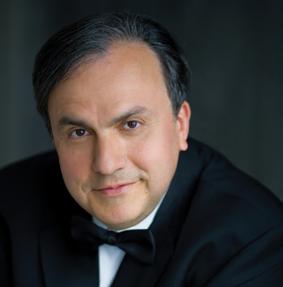
Internationally recognized as one of today’s most acclaimed and admired pianists, Yefim Bronfman stands among a handful of artists regularly sought by festivals, orchestras, conductors and recital series. A frequent touring partner with the world’s greatest orchestras and conductors, his 2024–25 season includes the Pittsburgh and NDR Hamburg symphonies on tour in Europe followed by China and Japan with the Vienna Philharmonic. With orchestras in the US he returns to Cleveland, New York, Houston, Portland, Los Angeles, Philadelphia, Baltimore, Miami, Sarasota and Pittsburgh and in Europe to Hamburg, Helsinki, Berlin, and Vienna. In advance of a spring Carnegie Hall recital his program can be heard in Austin, St. Louis, San Francisco, Washington DC, Amsterdam, Rome, Lisbon, and Spain. Born in Tashkent in the Soviet Union, Yefim Bronfman immigrated to Israel with his family in 1973, where he studied at the Rubin Academy of Music at Tel Aviv University. In the United States, he studied at The Juilliard School, Marlboro School of Music, and the Curtis Institute of Music. A recipient of the prestigious Avery Fisher Prize, in 2010 he was the recipient of the Jean Gimbel Lane prize in piano performance from Northwestern University and in 2015 an honorary doctorate from the Manhattan School of Music.
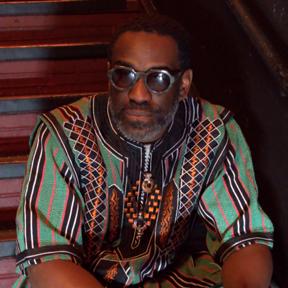
Will Calhoun is a two-time GRAMMY Award–winning musician, composer, and producer best known as the drummer of the groundbreaking rock band Living Colour. He has collaborated with Harry Belafonte, Pharoah Sanders, Wayne Shorter, Mick Jagger, McCoy Tyner, Public Enemy, Lauryn Hill, Herb Alpert, and Mos Def, as well as African village masters in his lifelong exploration of the ancient art of drumming. By the early 1990s, Living Colour had attained worldwide success and earned accolades for their hit song “Cult of Personality,” which won the GRAMMY for Best Hard Rock Performance. In addition to drumming for Living Colour, Calhoun continues to explore various musical avenues, including jazz, electronic percussion, and world music. Calhoun serves on the board of the Bronx Music Heritage Center, which promotes Bronx music and offers free community programs; and The Way of the Rain, a multidisciplinary project that raises awareness about climate change through performance art.

Cameron Carpenter is the world’s most visible organist, the first ever to be nominated for a GRAMMY Award for a solo album. He holds the 2012 Leonard Bernstein Award, and in 2014, launched his International Touring Organ (ITO)—a first-of-its kind digital organ built to his own design. He is a virtuoso composer/ performer who is smashing the stereotypes of organ and classical music. Cameron’s latest album, recorded at the Berlin Konzerthaus, includes his own rendition of Bach’s Goldberg Variations as well as Hanson’s Symphony No. 2, and was released by Universal/DECCA in the fall of 2021. One of his previous releases, All You Need is Bach, debuted at No. 1 on the traditional classical charts. Recent highlights include recitals with the Los Angeles Philharmonic, the Lucerne Festival, Philharmonie Cologne, Festspielhaus Baden-Baden, Philharmonie Luxembourg, his debut at the Cité de La Musique, Paris and a residency at Konzerthaus Berlin.

Jess Cramp is a shark researcher who specializes in conservation policy and engaging communities in the management of their oceans. Cramp co-championed a grassroots campaign that resulted in the Cook Islands Shark Sanctuary in 2012, an area exceeding 770,000 square miles. Cramp has since advised communities, national governments, and international organizations on conservation policy, led marine research expeditions through various island nations, and mentored local youth interested in science. She is the founder and executive director of Sharks Pacific, a nonprofit organization that conducts research, outreach, and advocacy throughout the Pacific Islands region. Her work focuses on improving fisheries management, human-wildlife conflict prevention, community empowerment, and the development of policies that consider people and the environment in equal measure. Cramp is currently a PhD candidate at James Cook University. An accomplished speaker, she was named a National Geographic Emerging Explorer in 2015 and an AAAS If/Then Ambassador in 2019.

Lucas Debargue gained international attention with his performances at the Tchaikovsky International Competition in Moscow in 2015, where he received the coveted Prize of the Moscow Music Critics’ Association. Today, Debargue plays solo and with leading orchestras in the most prestigious venues of the
world including Berlin Philharmonie, Concertgebouw Amsterdam, Konzerthaus Vienna, Théâtre des Champs-Elysées and Philharmonie Paris, London’s Wigmore Hall and Royal Festival Hall, Alte Oper Frankfurt, Cologne Philharmonie, Suntory Hall Tokyo, the concert halls of Beijing, Shanghai, Taipei, Seoul, and the legendary Grand Hall of Tchaikovsky Conservatory in Moscow, the Mariinsky Concert Hall in St. Petersburg, and Carnegie Hall in New York. Debargue regularly collaborates with Valery Gergiev, Mikhail Pletnev, Vladimir Jurowski, Andrey Boreyko, Tugan Sokhiev, Vladimir Spivakov and Bertrand de Billy. His chamber music partners include Gidon Kremer, Janine Jansen, and Martin Fröst. Sony Classical has released five of his albums with music of Scarlatti, Bach, Beethoven, Schubert, Chopin, Liszt, Ravel, Medtner, and Szymanowski.
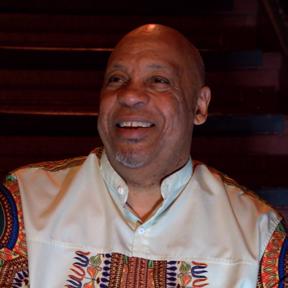
Bassist and composer Santi Debriano has been playing the instrument since he was a teenager. Born in Panama, he has lived in New York City for many years, serving as the leader of his own groups and as a sideman for others. Debriano has performed at many of the world’s most renowned jazz festivals and concert halls, often presenting his own compositions with his groups. His nine-piece Arkestra Bembe has released their most recent recording, Ashanti, on Jojo Records. Debriano has collaborated with Archie Shepp, Kirk Lightsey, Chico Freeman, Arthur Blythe, David Murray, Attila Zoller, Oliver Lake, Baikida Caroll, Sam Rivers, Hank Jones, Elvin Jones, Pharaoh Sanders, Randy Weston, and many other renowned jazz musicians. He created Castle Magic, a trio of double bassists in which he is composer, soloist, and director. With the Garth Fagan Dance Company and Don Pullen Trio, he participated in the realization of the dance piece Sacred Common Ground He was featured in the production of two documentary films on jazz by French filmmaker Marc Huraux, Check the Changes and Bird Now, and performs with Archie Shepp in the Canadian film Imagine the Sound.

A prizewinner at the XV International Tchaikovsky Competition and SONY Classical exclusive artist, Pablo Ferrández has been hailed as a “new cello genius” by Le Figaro, among other acclaim. Recent highlights include appearances with LA Philharmonic at Hollywood Bowl, Filarmonica della Scala, Orchestra dell’Accademia Nazionale di Santa Cecilia, Oslo Philharmonic, Seoul Philharmonic, NDR Elbphilharmonie Orchester, Vienna Radio Symphony, Royal Philharmonic, Academy of St. Martin in the Fields, and Rotterdam Philharmonic. Ferrández recently toured with Anne-Sophie Mutter and the London Philharmonic under Ed Gardner, with the Munich Philharmonic, and with the
Antwerp Symphony. He is also frequently invited to festivals such as Verbier, Salzburg, Dresden, Sion, Dvorak Prague Festival, and Grant Park, among others. Last season he debuted at the David Geffen Hall in New York with the Orquesta del Teatro Real, and also performed with the Boston Symphony, Cleveland Orchestra, San Francisco Symphony, Rotterdam Philharmonic, London Philharmonic, Dusseldorf Symphony, and Orchestre National de France, as well as the LA Philharmonic with AnneSophie Mutter under Gustavo Dudamel. Ferrández plays the Stradivarius “Archinto” 1689, on a generous lifelong loan from a member of the Stretton Society.

Korean cellist Jaemin Han gained international recognition with top prizes at the George Enescu and Geneva International Competitions. He has collaborated with leading orchestras, including the Luxembourg Philharmonic and the Auckland Philharmonia. Highlights of his 2023–24 season include his Edinburgh International Festival debut and appearances with the KBS Symphony Orchestra and the Seoul Philharmonic. Han’s recordings include a showcase recital on the Deutsche Grammophon “Rising Stars” series. Han is a recipient of the Shinhan Music Award and studies at the Kronberg Academy under Wolfgang-Emanuel Schmidt. He plays a Giovanni Grancino cello on generous loan from the Samsung Foundation of Culture.

Isata Kanneh-Mason is a rising star pianist known for her captivating performances and eclectic repertoire, spanning from Haydn and Mozart to Gershwin. She has achieved critical acclaim with her recordings, including a No. 1 UK album with her Clara Schumann album. KannehMason performs with leading orchestras worldwide, including the Philadelphia Orchestra and the Cleveland Orchestra. She regularly tours internationally as a soloist and chamber musician, frequently appearing with her cellist brother, Sheku. Kanneh-Mason has received numerous awards, including the Leonard Bernstein Award and the Opus Klassik award, and has been recognized as an ECHO Rising Star.

Sheku Kanneh-Mason is a celebrated cellist renowned for his accessible approach to music. A member of the multi-talented Kanneh-Mason family, his career soared after he performed at the royal wedding of Prince Harry and Meghan Markle in 2018, following his 2016 BBC Young
Musician win. He has achieved critical acclaim with his recordings, including an unprecedented UK Top 10 album with his Elgar recording, making him the first ever cellist to reach the UK Top 10. Kanneh-Mason performs globally with leading orchestras like the Los Angeles Philharmonic and the Berlin Philharmonic. He is a passionate advocate for music education, working with organizations like the Antigua and Barbuda Youth Symphony Orchestra. A graduate of the Royal Academy of Music, he was appointed MBE in 2020. He plays a Matteo Goffriller cello from 1700 which is on indefinite loan to him.

Do-Hyun Kim was a first prize winner at the Young Concert Artists International Auditions in 2017. He was awarded the Korean Concert Society Prize for a Kennedy Center debut, the Embassy Series Prize for a concert in Washington, D.C., and the Tri-I Noon Recitals Prize at Rockefeller University for a concert in New York City. He also received the Paul A. Fish Memorial Prize, the John Browning Memorial Prize, the Ronald Asherson Prize and the Michaels Award for a New York debut. Kim’s recent concerts include performances with the Mariinsky Orchestra in St. Petersburg, Russia, his solo debut recital at the Verbier Festival in Switzerland, and appearances at the Honest Brook Music Festival, Pianofest in the Hamptons and the Bravo! Vail Music Festival. As winner of the Cleveland Institute of Music’s Concerto Competition, Kim performed with the Conservatory’s Orchestra. He also won first prize at the Kukmin Daily Piano Competition in South Korea and top prize at the Vendome Piano Competition in Switzerland. Originally from Korea, Mr. Kim moved to the United States to attend the Cleveland Institute of Music where he studied with HaeSun Paik and Sergei Babayan. He is continuing his studies with Mr. Babayan at The Juilliard School, where he is currently pursuing a master’s degree.

Award-winning guitarist Julian Lage has been widely acclaimed as one of the most prodigious guitarists of his generation. The New York-based musician boasts a long resumé as a desired sideman with artists as diverse as Gary Burton, Taylor Eigsti, John Zorn, Nels Cline, Chris Eldridge, Eric Harland, and Fred Hersch, to name just a few. Equally important is his reputation as a soloist and bandleader. He is equally versed in jazz, classical, pop, and show tunes, and has spent more than a decade searching through the myriad strains of American musical history. Sounding Point, his 2009 debut album for Emarcy, featuring Bela Fleck and Chris Thile among his sidemen, was nominated for a GRAMMY Award for Best Contemporary Jazz Album. Lage was a child prodigy, playing his instrument at the age of five and performing in public a year later. Shortly thereafter, Lage began playing with such
renowned artists as Carlos Santana (when he was only eight years old), Pat Metheny, Kenny Werner, Toots Thielemans, Martin Taylor, and David Grisman, among others, resulting in Lage being the subject of the Academy Award-nominated 1996 documentary film Jules at Eight. His latest album is Speak To Me, released in 2024.

Cecile Licad, born in 1961 in Manila in the Philippines, was a student at the Curtis Institute with Mieczyslaw Horszowski, Seymour Lipkin, and Rudolf Serkin, with whom she continued her studies privately for five years. She is the recipient of a gold medal at the Leventritt Competition. Concerts have led Cecile Licad to important music centers from the Tanglewood Festival with the Boston Symphony Orchestra under Seiji Ozawa to performances with the New York Philharmonic, Cleveland Orchestra, and the Royal Philharmonic with conductors like Claudio Abbado, Zubin Mehta, André Previn, Mstislav Rostropovich, and Sir Georg Solti. She has recorded numerous CDs of compositions by Chopin, Gottschalk, Ravel, Schumann, and more. Cecile Licad’s CD recording of Piano Concerto No. 2 in each case by Chopin and Saint-Saëns with the London Philharmonic Orchestra under André Previn (SONY) received the Grand Prix du Disque.

GRAMMY-winning saxophonist, composer and producer Joe Lovano won a GRAMMY for his album 52nd Street Themes and has received 14 other nominations. He has won DownBeat Magazine ’s Critics and Readers Polls countless times as Tenor Saxophonist, Musician of the Year, Jazz Album of the Year and Triple Crowns from DownBeat. He has also received numerous awards from Jazz Times and the Jazz Journalists Association for Tenor Saxophone, Album of the Year, and Musician of the Year. Lovano has performed and recorded with a long list of jazz greats including Woody Herman, Dr. Lonnie Smith, Mel Lewis, Bob Brookmeyer, Paul Motian, Bill Frisell, Tony Bennett, Abbey Lincoln, Charlie Haden, John Scofield, Gunther Schuller, Elvin Jones, McCoy Tyner, Ed Blackwell, Herbie Hancock, Dave Holland, Hank Jones, Dave Liebman, Michael Brecker, Dave Douglas, Judi Silvano, Ravi Coltrane, Chucho Valdés, Ornette Coleman, Diana Krall, and many others. He has created an extensive body of work for his own ensembles including strings, woodwinds, his horn-rich Nonet, the Classic Quartet, Trio Tapestry, and more.

Wynton Marsalis has been described as the most outstanding jazz musician and trumpeter of his generation, as one of the world’s top classical trumpeters, as a big band leader in the tradition of Duke Ellington, a brilliant composer, a devoted advocate for the arts and a tireless and inspiring educator. His life is a portrait of discipline, dedication, sacrifice, and creative accomplishment. The sound of Wynton Marsalis’ band is inspired by the basic principles of democracy. According to Marsalis, what you hear in a great jazz band is the sound of democracy. “The jazz band works best when participation is shaped by intelligent communication.” This intelligent, hard-swinging interplay has made Marsalis’ bands the favorite among jazz musicians and audiences worldwide. In the smallest of towns Marsalis is received warmly and enthusiastically. Through jazz music Wynton Marsalis represents America all over the world. In such disparate locations from Prague to Warsaw, Seoul to Wellington, Paris to Istanbul, Santiago to Mexico City, Toronto to Calgary, Amarillo to Portland, you will find Wynton Marsalis sharing his vision of the union of jazz and democracy.

For nearly 50 years Anne-Sophie Mutter has been a fixture in all the world’s major concert halls, making her mark on the classical music scene as a soloist, mentor and visionary. The four-time GRAMMY® Award winner is equally committed to the performance of traditional composers as to the future of music. To date she has given world premieres of 31 works. She dedicates herself to supporting tomorrow’s musical elite and numerous benefit projects. In 2022, she joined the foundation board of the Lucerne Festival. In 1997 she founded the Association of Friends of the Anne-Sophie Mutter Foundation e.V., to which the Anne-Sophie Mutter Foundation was added in 2008. These two charitable institutions provide support for scholarship recipients, tailored to the fellows’ individual needs. Since 2011, Anne-Sophie Mutter has regularly shared the spotlight on stage with her ensemble of fellows, “Mutter’s Virtuosi.” She has been awarded the German Grand Order of Merit, the French Medal of the Legion of Honour, the Bavarian Order of Merit, the Decoration of Honour for Services to the Republic of Austria, and numerous other honors.

As a faculty member at the Colburn School Conservatory of Music from 2003–22, Dr. Kristi BrownMontesano served as Chair of Music History and helped shape the degree programs of the institution. Today, she is a Lecturer in Musicology at the UCLA Herb Alpert School of Music. She also collaborates with many of Southern California’s most distinguished musical organizations, including the Los Angeles Philharmonic, Los Angeles Opera, La Jolla Music Society, and the Philharmonic Society of Orange County. For more information, please visit kristibrownmontesano.com.

Michael Gerdes is Director of Orchestras at San Diego State University, where he conducts the San Diego State Symphony Orchestra, Chamber Orchestra, and Opera Orchestra. He earned his Bachelor of Music degree in Music Education and Bachelor of Arts Degree in Philosophy from Concordia College in Moorhead, Minnesota. Selected by the San Diego Union-Tribune as one of three “Faces to Watch in Classical Music” during his first year as Director of Orchestras, Gerdes is focused on creating a thriving orchestral community at San Diego State University.

Journalist, broadcaster, musician, author, and record producer Robert John Hughes has interviewed hundreds of musical artists in classical, jazz, pop, rock, R&B, and blues, including Sting, Wynton Marsalis, Bonnie Raitt, Paul Simon, B.B. King, Adele, and Peter Gabriel. As a record producer and member of the GRAMMY® Academy, Hughes has released five albums of live performances by artists heard on San Diego FM station 102.1 KPRi. Hughes has hosted La Jolla Music Society Preludes since 2018.

Molly Puryear brings passion for dance and nonprofit administration to her position as Executive Director of Malashock Dance. Puryear has worked with Malashock Dance since 2006, and previously served in the role of Education Director. She strategically aligns artistic and educational efforts to create a dynamic relationship between programs, the communities they serve, and the organization’s valuable funders. Puryear is committed to serving the San Diego community through the development and administration of vibrant dance programs. She believes that dance is an avenue for personal expression that engages people from all walks of life

A performing arts institution located in the heart of Los Angeles, the Colburn School trains students from beginners to those about to embark on professional careers. The academic units of the school provide a complete spectrum of music and dance education united by a single philosophy: that all who desire to study music or dance should have access to top-level instruction. Each year, nearly 2,000 students from around the world come to Colburn to benefit from the renowned faculty, exceptional facilities, and focus on excellence that unites the community. colburnschool.edu
COVER: S. Kanneh Mason & I. Kanneh Mason © James Hole; Pg.2: C. Carpenter © Dovile Sermokas; Pg.3: R. Fleming © Marvin Joseph, A. Gilbert © Marco Borggreve, J. Montgomery © Jiyang Chen, C. Greensmith © Shayne Gray, A. McGill © Martin Romero; Pg. 13: SummerFest Fellowship artists © Darren Bradley; Pg.14: Miró Quartet and The Baker-Baum Concert Hall courtesy of The Conrad; Pg. 16: L. Rosenthal © Sam Zausch; Pg.17: J. Lovano © Aquapio Films, J. Lage © Shervin Lainez, W. Calhoun © Aquapio Films, A. S. Debriano © Sam Henriques; Pg. 18: L. Debargue © Xiomara Bender; Pg. 22: J. Cramp © Andy Mann, Shark © Enrique Sala - National Geographic Society; Pg. 23: A. Mutter, Y. Bronfman, P. Ferrández © J. Milteer; Pg. 26: C. Carpenter © Dovile Sermokas; Pg. 29: C. Carpenter © Dovile Sermokas; Pg. 31: W. Marsalis courtesy of artist; Pg. 32: S. Kanneh Mason & I. Kanneh Mason © James Hole; Pg. 35: J. Han © Shin-Joong Kim; Pg. 38-39: Y. Bronfman © Dario Acosta, W. Calhoun © Aquapio Films, C. Carpenter © Dovile Sermokas, J. Cramp © Sora Devore, L. Debargue © Xiomara Bender, A. S. Debriano © Aquapio Films, P. Ferrández © Kristian Schuller, J. Han courtesy of artist, I. Kanneh-Mason © David Venni, S. Kanneh-Mason © Ollie Alli; Pg. 40-41: D. Kim courtesy of artist, J. Lage © Shervin Lainez, C. Licad courtesy of artist, J. Lovano © Aquapio Films, W. Marsalis courtesy of artist, A. Mutter courtesy of artist; BACK COVER: I. Barnatan © Marco Borggreve

The wonderful array of musical activity that La Jolla Music Society offers would not be possible without support from its family of donors. Your contributions to La Jolla Music Society help bridge the gap between income from ticket sales and the total cost to present the finest musicians and the best chamber music repertoire in San Diego. Your generosity also supports our programs in the local schools and throughout the community.
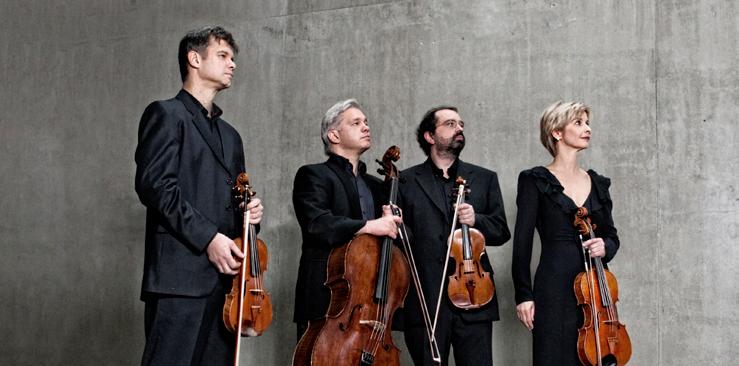
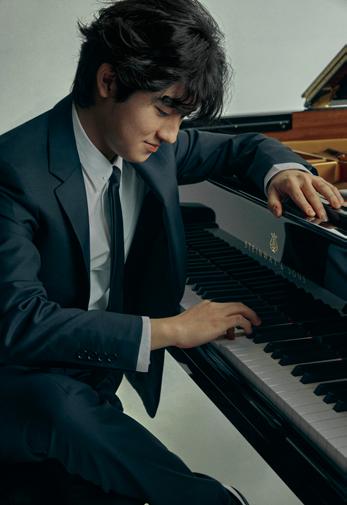
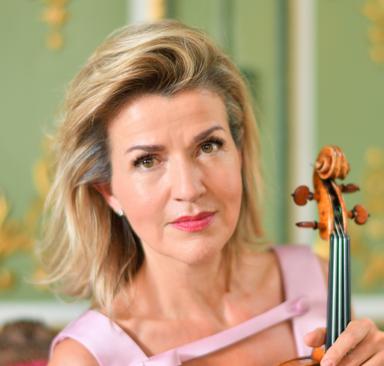
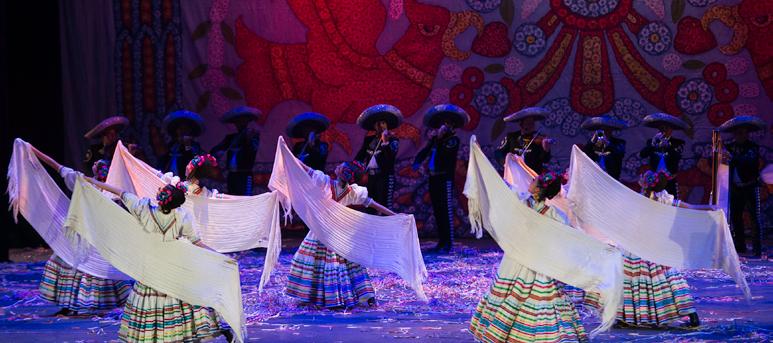

On the following pages La Jolla Music Society pays tribute to you, the leading players who make it possible to share the magic of the performing arts with our community.
La Jolla Music Society depends on contributed income for more than 60% of its annual budget. We are grateful to all of our contributors who share our enthusiams and passion for the arts. Every donor is a valued partner and they make it possible for one of San Diego’s premier music organizations to present year-round.
It is our honor to recognize the following donors.
($250,000 and above)
ANGEL
($100,000 - $249,999)
Brenda Baker and Steve Baum
Wendy Brody Estate
The City of San Diego Commission for Arts and Culture
Mary Ellen Clark
The Conrad Prebys Foundation
Joan* and Irwin Jacobs
Dorothea Laub
Anna and Edward Yeung
Raffaella and John* Belanich
Eleanor and Ric Charlton
Farfy Foundation
Jaqueline and Jean-Luc Robert
Debra Turner
Liqun Wang and Marco Londei
Clara Wu Tsai and Joseph Tsai
Karen and Kit Sickels
BENEFACTOR
($50,000 - $99,999)
Eleanor and Ric Charlton
Peter Cooper and Erik Matwijkow
Julie and Bert Cornelison
Silvija* and Brian Devine
Elaine Galinson and Herbert Solomon
Lehn and Richard Goetz
Jeanne Herberger
Susan and Bill Hoehn
Helen and Keith Kim
Angelina and Fredrick Kleinbub
Vivian Lim and Joseph Wong
Sheryl and Bob Scarano
Marge and Neal Schmale
Haeyoung Kong Tang
Sue and Peter Wagener
Bebe and Marvin Zigman
($25,000 - $49,999)
Mary Ann Beyster
Marla Bingham and Gary Gallagher
Gordon Brodfuehrer
Karen and Don Cohn
Ann Parode Dynes and Robert Dynes
Barbara Enberg
Jennifer and Kurt Eve
John Hesselink
The Lodge at Torrey Pines
Diana and Eli Lombrozo
Viviana and Enrique Lombrozo
Sue and John Major
Arlene and Lou Navias
Jeanne and Rick Norling
The Parker Foundation
ProtoStar Foundation
Thomas Rasmussen and Clayton Lewis
Sylvia and Steve Ré
Stacy and Don Rosenberg
Jeanette Stevens
Elizabeth and Joseph* Taft Revocable Trust
Vail Memorial Fund
Abby and Ray Weiss
Lise Wilson and Steven Strauss
($15,000 - $24,999)
Judith Bachner and Dr. Eric L. Lasley
Banc of California | Stephen Gamp
Jeffrey Barnouw
Jasna and David Belanich
Jim Beyster
Café Coyote and Rancho Coyote Wines
California Arts Council
Sharon L. Cohen
Ellise and Michael Coit
Cushman Foundation
Jendy Dennis Endowment Fund
Martha and Edward Dennis
Pamela Farr and Buford Alexander
Dr. Seuss Foundation
Debby and Wain Fishburn
Ingrid and Theodore Friedmann
Hal and Pam Fuson
Elisa and Rick Jaime
Susan and David Kabakoff
Jo Kiernan
Nancy Linke Patton and Rip Patton
Jacqueline Mars
Gini and Dave Meyers
Andy Nahas
Peggy and Peter Preuss
Maureen and Thomas Shiftan
Robert Singer
Dagmar Smek and Arman Oruc
Susan Shirk and Sam Popkin
Stephanie and Nick Stone
($10,000 - $14,999)
Anonymous
Celeste and Timothy Bailey
Carolyn and Giovanni Bertussi
Abdul Bitar
Raymond Chinn
Eric Cohen and Bill Coltellaro
Amy Corton and Carl Eibl
County of San Diego Community Enhancement Fund
Monica Fimbres
Beverly Fredrick
Joy Frieman
Wendy Frieman
Sarah and Mike Garrison
Brenda and Michael Goldbaum
Ingrid Hibben
Angela and Cory Homnick
Marilee and Peter Kovacs
Kathleen and Ken Lundgren
Elaine and Doug Muchmore
ResMed Foundation
Leigh P. Ryan
Susan and Stephen Schutz
Reesey and David Shaw
June and Doctor Bob Shillman
Gloria and Joseph Shurman
Greta and Steve Treadgold
Susan and Richard Ulevitch
($5,000+)
Anonymous (2)
Arleene Antin and Leonard Ozerkis
Brad and Gigi Benter
Ginny* and Bob Black
The Blades Foundation
William Boggs
Karen and Jim Brailean
Lisa and David Casey
Katherine and Dane Chapin
Lori and Aaron Contorer
Debbe Deverill
The Hon. Diana Lady Dougan
George and Tallie Dennis
Sheryl and Michael Durkin
Jill Esterbrooks and James Robbins
Sue and Chris Fan
Diane and Elliot Feuerstein
Sarah and Mike Garrison
Buzz and Peg Gitelson
Lisa Braun Glazer and Jeff Glazer
Lynn Gorguze and The Hon. Scott Peters
Margaret Stevens Grossman and Michael Grossman
Nellie High-Iredale
Barbara and Paul Hirshman
Teresa and Harry Hixson
Nancy and Stephen Howard
Theresa Jarvis
Barbara Kjos
Kate Leonard and Richard Forsyth
Christine and Charles Lo
Barbara Loonin
Jain Malkin
Miguel Rodolfo Mata Dadillo
Andrea Migdal and Mike Tierney
Gail and Edward Miller
Robin and Hank Nordhoff
Marina and Rafael Pastor
Linda Platt
Carol Randolph and Robert Caplan
Vivien Ressler
Catherine Rivier
Joan and Jack Salb Estate
Clifford Schireson and John Venekamp
Todd R. Schultz
Gerald and Susan Slavet
Diane and DJ Smith
Gloria and Rod Stone
Shelby and Bill Strong
Ulf Sundberg and Mariko Sawa
Barbara and Sam Takahashi
Gwynn and Brian Thomas
Ayse Underhill
Mary L. Walshok
Erika Walter*
Armi and Al Williams
Shara Williams and Benjamin Brand
Mary and Joseph Witztum
Dolly and Victor Woo
Carol Young
($2,500+)
Anonymous
Judith Adler
Laura Applegate
Carson Barnett and Tom Dubensky
Emily and Barry Berkov
Berenice and Jerry Blake
DeAnn Cary and Bill Jech
Aeria Chang and Scott Eisenberg
Carol and Jeff Chang
Julie and Robert Cowan Novak
Melanie Cruz
D'Addario Foundation
Marilyn and Ernie Dronenburg
Sharon Dunn
Phyllis and Dan Epstein
Feary Media
Cheryl Hintzen-Gaines and Ira Gaines
Virginia Graham
Deborah and Ronald Greenspan
Lori Haynes
Linda Howard
Ida Houby and Bill Miller
Marilyn K. James and Rick Phetteplace
Karen and Warren Kessler
Sallay and Tae Kim
Wally Klein
Leonard Korneich
Carol Lam and Mark Burnett
Veronica and Miguel Leff
Ann and Gerald Lipschitz
Sylvia Liwerant
Mark Machina
Dennis McConnell and Kimberly Kassner
Cynthia and George Mitchell Foundation
Muchnic Foundation
Joyce and Ron Nelson
Virginia Oliver
Robert and Allison Price
Christine Purcell
Eva and Doug Richman
Colette Carson Royston and Ivor Royston
Adriana and Brian Scott
Noni and Drew Senyei
Stephanie and Steve Steinberg
Jean Sullivan and David Nassif
Diana and Roger Van Duzer
Yvonne E. Vaucher
Susan Ward and Lawrence Gartner
Lynne and David Weinberg
Jo Weiner
Bart Zeigler
($1,000+)
Anonymous (3)
K Andrew Achterkirchen
Albertsons-Safeway Foundation
Jadwiga Alexiewicz
Dede and Mike Alpert
Axel's Gift
Nicholas and Samantha Binkley
Ryan Bordelon
Molly and Charles Brazell
Diane M. Brockington
Isabel and Stuart Brown
James Carter
Michael and Cathy Casteel
Kathleen Charla
June Chocheles
Anthony Chong and Annette Nguyen
Linda Christensen and Gonzalo Ballon-Landa
Ann Craig
Caroline DeMar
Marilou Dense
Linda and Wallace Dieckmann
Karen Dow
Susan Dramm
Renee and James Dunford
Lyndie and Sam* Ersan
Nancy Forcier
July F. Galper
Barbara Giammona
Girard Foundation
Jeffrey Goldman
Cynthia and Tom Goodman
The Granada Fund
Anne Graves
Marcia Green
Carrie Greenstein
Lee Ann Groshong
Jill Hall
Pamela Hamilton Lester
Terence Hart
Carol Harter and William Smith
Ted Hoehn and Matt Clermont
Lulu Hsu
Zella Kahn-Jetter and Gary Jetter
Dwight Kellogg
John Graul and Cynthia King
Jeeyoon Kim
Melvin Knyper
H. and Susan Koshkarian
Greg Lemke
Jenna Liu
Robin Luby
Stacey J. Lucchino
Eileen A. Mason
Ted McKinney
Elinor Merl and Mark Brodie
Sandra Miner
Anne and John Minteer
Chandra Mukerji
Brian Munden
Charles Perrin
Ursula Pfeffer
Dana and Stella Pizzuti
Barbara Rabiner
Jay Rosen
Arlene and Peter Sacks
Cristina and Victor Saldivar
Doreen and Myron Schonbrun
Anne and Ronald Simon
David and Phyllis Snyder
Dale and Mark Steele
Lester and Elizabeth Stiel
Lee Talner
Molly Thornton
Jennifer Tillman
Pam Wagner
Muffy Walker and John Reed
Karen M. Walter
Lisa Widmier
Joyce Williams
Karen and Richard P. Wilson
David A. Wood
Natasha Wong and Kevin Chen
Christy and Howard Zatkin
Susan and Gavin Zau
Anonymous (3)
Robin Allgren
Elise Angel
Paddi and Nicholas Arthur
Balloon Man Dan
Gayle Barsamian and David Clapp*
Christopher Beach and Wesley Fata
Stephanie Bergsma and Dwight Hare
Carol and Bruce Boles
Edwin Chen
Diane and David Child
Thayne Clark
Betty Clarquist
Alain J.-J. Cohen
Carolyn and Clifford Colwell
Robert Conn
Jeanette Day
Sandra and Henry Den Uijl
Linda and Rick Dicker
Gail Donahue
Kim Doren
Joyce and Paul Dostart
Stanley Drosch
Jeane Erley
Stephen Feldman
Irene and Eduardo Feller
Jack C. Fisher
Melissa Foo
Ferdinand Marcus Gasang
Robert Gleason and Marc Matys
Beth Goodman
John Gordon and Jane Burns
Patt and Jeff Hall
Andrea Harris
Nicole Holland
Laura Henson Hueter and Geoffrey Hueter
Gregory A. Jackson
Nancy and Michael Kaehr
Sofia and Leon Kassel
Kathleen Kovacs
Carol Lynne Krumhansl
Lewis Leicher
Jennifer Luce
Peter and Susan Mallory
Linda and Michael Mann
Susan and Craig McClellan
Nita Mehta
Maggie and Paul Meyer
Desiree Michelle
Betsy and Greg Mitchell
Patricia Moises
Norman Needel
Rosalva Parada
Sigrid Pate
John David and Mary Peters
Kirk L. Peterson
Paula M. Pottinger
Jacqueline Powell
Irina and Mikhail Prishchepa
Sharon Rearwin and Thomas Delman
Sasha Richards
Clark Ritter and John Gowan
Gabriele and Nathan Rosenblatt
Barry Rosenbush
James F. Sallis
Tracy and Tim Sanford-Wachtel
Hannah Schlachet
Denise Selati
Michael Sellett
Tatjana Soli
Mary Sophos and William Pitts
Annemarie and Leland Sprinkle
Lisa Stennes-Laikind
Anne Turhollow
Karen L. Valentino
Victor A. Van Lint
N. B. Varlotta
Cynthia Walk
Ruth Waterman
Patricia and Christopher Weil
Suzanne and Edward Weissman
Carol West
Suhaila White
Olivia and Martin Winkler
Tanya Young and Michael McManus
Bonnie J. Wright
Barbara and Michel Zelnick
Phyllis and Phil Ziring
Anonymous
Rogerio Ampudia
Sue Andreasen
Christine and Craig Andrews
Clyde Beck
Joyce and Robert Blumberg
Sandra Boddy
C M Boyer
Donna Gray Bowersox
Linda Brown
Ron Campnell
Debirah Carnick
Michael Casey
Kathy Chambery
Patty and Jim Clark
Marjorie Coburn
Marilyn Colby
Linda Cory Allen
Susan Crutchfield
Jeffrey Cullen
Hugh Davies
Lesley Davis
Bernadette Dobbs
Zofia Dziewanowska
Barbara Edgington
Gerhard Engel
Lucy and Stephen Eskeland
Robert Fahey
Juan C. Figueroa
Pamel and L. Michael Foley
Beverly Fremont
Yoshiro Fukuoka
Margareta and Bruce Galanter
Tony Gild
Diana and Tom Gingell
Hany Magdy Girgis
Phyllis and Morris Gold
Lola and Walter Green
Douglas Hall Jr.
Walter Hickey
Christine Hickman and Dennis Ragen
Vivian and Greg Hook
Patricia Jasper
David K. Jordan
Diane and John Kane
Kelley Keatly
Nancy Kennedy
Paul and Meg Krueger
Marti Kutnik
Carolynn La Pierre
Leslie Learn
Linda Low-Kalkstein and Allen Kalkstein
Margo Maeder
Patricia Manners
Neil Marmor
Jim Martin
M. Margaret McKeown and Peter Cowhey
Joani Nelson*
Brigitte and Richard Obetz
Kyomi O'Connor
Timothy O'Connor
Antje Olivie
Pascual Ortiz Rubio
Grace Y. Park
Elizabeth Phelps
Carol Plantamura
Joely Pritzker
Bill Purves and Don Schmidt
Hanna Reisler
Jessica and Eberhard Rohm
Barbara Rosen and Bob Fahey
Anne Rudolph
Carolyn Rynard
Jane and Eric Sagerman
Alice and Brad Saunders
Hermeen Scharaga
Sharron Seal
Marjorie Hansen Shaevitz
Annie So
Katherine Michaud Silver and Mark Silver
Julie Singletary
Kinga S. Soni
Julie Swain
Gayle and Philip Tauber
Joy and Richard Vaccari
Richard Vasquez
Gonul Velicelebi
Jen-Yi Wang
Suzanne Weiner
Paul Woody
Margaret Wypart
Tanya Young and Michael McManus
monthly-donor program
* in memoriam
This list is current as of March 1, 2025. We regret any errors. Please contact Wadeaa Jubran at WJubran@TheConrad.org or 858.526.3447 to make a correction.
Elaine Galinson and Herbert Solomon
Bebe and Marvin Zigman
Amy Corton and Carl Eibl
Ellise and Michael Coit
Jeanette Stevens
POINTE
Carolyn and Giovanni Bertussi
We are grateful for each patron for their passion and support of our dance programs.
In Memory of John Belanich:
Martha and Ed Dennis
Ferdinand Marcus Gasang
Sylvia and Steve Ré
Todd Schultz
In Memory of Bjorn Bjerede: Anonymous
Jenna Aviano
Martha and Edward Dennis
Ferdinand Marcus Gasang
Wendy G. and Greg Hein
James Hobza
Jo Kiernan
Amy and Bill Morris
Michael Laprey
Pat M. Laprey
Patricia Laprey
Annemarie and Leland Sprinkle
Maggie S. Wolfe-Johnson
In Honor of Ginny Black:
Ferdinand Marcus Gasang
Sylvia and Steve Ré
In Honor of Maureen Clancy: Lester and Elizabeth Stiel
In Memory of Silvija Devine:
Ferdinand Marcus Gasang
Sylvia and Steve Ré
In Memory of Alan Gary:
Ferdinand Marcus Gasang
David Rosenthal
Natasha Wong and Kevin Chen
Dolly Woo
Ellen Worthington
In Honor of Ferdie Gasang: Benjamin Guercio
In Memory of Joan Jacobs:
Ferdinand Marcus Gasang
Sylvia and Steve Ré
Todd Schultz
John Venekamp and Clifford Schireson
In Honor of Marilyn Perrin: Charles Perrin
In Honor of Leah Rosenthal: Bart Ziegler
In Honor of Sheryl and Bob Scarano:
Susan and Craig McCLellan
In Memory of Joanne Snider:
Ferdinand Marcus Gasang
Jud, LeeAnn, and Tyler Groshong
Glenn Mosier
Kevin Pearson and Stephen Murphy
Renee Roth
Reissa Schrager-Cole and Hilary Cole
Kerry Symonds
Dolly and Victor Woo
In Memory of Alan Springer:
Ferdinand Marcus Gasang
Barbara Maggio
In Honor of Susan and Richard Ulevitch:
Leslie Simon
In Honor of the marriage of David Ulevitch and Stephanie Nass:
Susan and Richard Ulevitch
In Memory of Mrs. Erika Walter and in honor of Dr. Johannes Walter: KyungAh Chung-Benedetti
Anonymous (2)
Brenda Baker and Steve Baum
June L. Bengston*
Joan Jordan Bernstein
Bjorn Bjerede and Jo Kiernan
James C. and Karen A. Brailean
Gordon Brodfuehrer
Wendy Brody*
Barbara Buskin*
Trevor Callan
Geoff and Shem Clow
Anne and Robert Conn
George and Cari Damoose*
Teresa and Merle Fischlowitz*
Lynda Fox*
Ted and Ingrid Friedmann
Joy and Ed* Frieman
Sally Fuller
Maxwell H. and Muriel S. Gluck*
Trude Hollander*
Joan* and Irwin Jacobs
Eric Lasley
Theodora Lewis*
Vivian Lim and Joseph Wong
Joani Nelson*
Maria and Dr. Philippe Prokocimer
Bill Purves
Darren and Bree Reinig
Jay W. Richen*
Leigh P. Ryan
Jack and Joan Salb*
Johanna Schiavoni
Pat Shank
Reesey Shaw and David Joseph Shaw, M.D.
Joseph and Gloria Shurman
Karen and Christopher Sickels
Marge and Neal Schmale
Todd R. Schultz
Jeanette Stevens
Elizabeth and Joseph* Taft
Norma Jo Thomas
Yvonne E. Vaucher
Lucy and Ruprecht von Buttlar
Ronald Wakefield*
John B. and Cathy Weil
Carolyn Yorston-Wellcome and H. Barden Wellcome*
Karl and Joan Zeisler
Bebe and Marvin Zigman
Josephine Zolin
*in memoriam
It is easy to make a bequest to La Jolla Music Society, and no amount is too small to make a difference.
Here is a sample of language that can be incorporated into your will:
“I hereby give ___% of my estate (or specific assets) to La Jolla Music Society, Tax ID 23-7148171, 7600 Fay Avenue, La Jolla, CA 92037, for its artistic programs (or education, general operating, or where needed most)."
Then, please contact Ferdinand Gasang at FGasang@TheConrad.org or 858.526.3426 and let him know you have included LJMS in your estate plans.
The Legacy Society recognizes those generous individuals who have chosen to provide for La Jolla Music Society’s future. Members have remembered La Jolla Music Society in their estate plans in many ways—through their wills, retirement gifts, life income plans, and many other creative planned giving arrangements. We thank them for their vision and hope you will join this very special group of friends.
If you have included LJMS in your estate plans, please let us know so we may recognize you. Please contact Ferdinand Gasang at FGasang@TheConrad.org or 858.526.3426.
Brenda Baker and Steve Baum
Joan* and Irwin Jacobs
Dorothea Laub
Raffaella and John* Belanich
Eleanor and Ric Charlton
Mary Ellen Clark
Jaqueline and Jean-Luc Robert
Karen and Kit Sickels
Debra Turner
Liqun Wang and Marco Londei
Julie and Bert Cornelison
Silvija* and Brian Devine
Elaine Galinson and Herbert Solomon
Helen and Keith Kim
Angelina and Fred Kleinbub
Vivian Lim and Joseph Wong
Haeyoung Kong Tang
Sue and Peter Wagener
Anna and Edward Yeung
Barbara Enberg
Arlene and Louis Navias
Pam and Hal Fuson
Peggy and Peter Preuss
Raymond Chinn
John Hesselink
Elaine and Doug Muchmore
Elizabeth and Joseph* Taft
Bebe and Marvin Zigman
Anonymous
Jeff Barnouw
Mary Ann Beyster
Abdul Bitar
Virginia* and Robert Black
James C. and Karen A. Brailean
Buzz and Peg Gitelson
Lisa Braun-Glazer and Jeff Glazer
Brenda and Michael Goldbaum
Margaret Stevens Grossman and Michael Grossman
Theresa Jarvis
Christine and Charles Lo
Barbara Loonin
Kathleen and Ken Lundgren
Don and Stacy Rosenberg
Leigh P. Ryan
Sheryl and Bob Scarano
Neal and Marge Schmale
Susan and Gerald Slavet
Diane and DJ Smith
Jeanette Stevens
Gloria and Rodney Stone
Susan and Richard Ulevitch
Shara Williams and Benjamin Brand
Dolly and Victor Woo *in memoriam
We are honored to have this extraordinary group of friends who have made multi-year commitments to La Jolla Music Society, ensuring that the artistic quality and vision we bring to the community continues to grow.







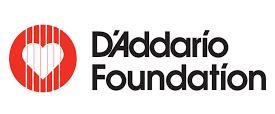


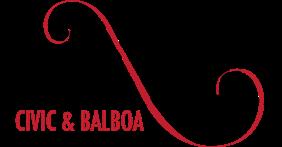
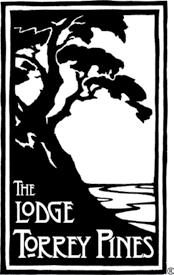











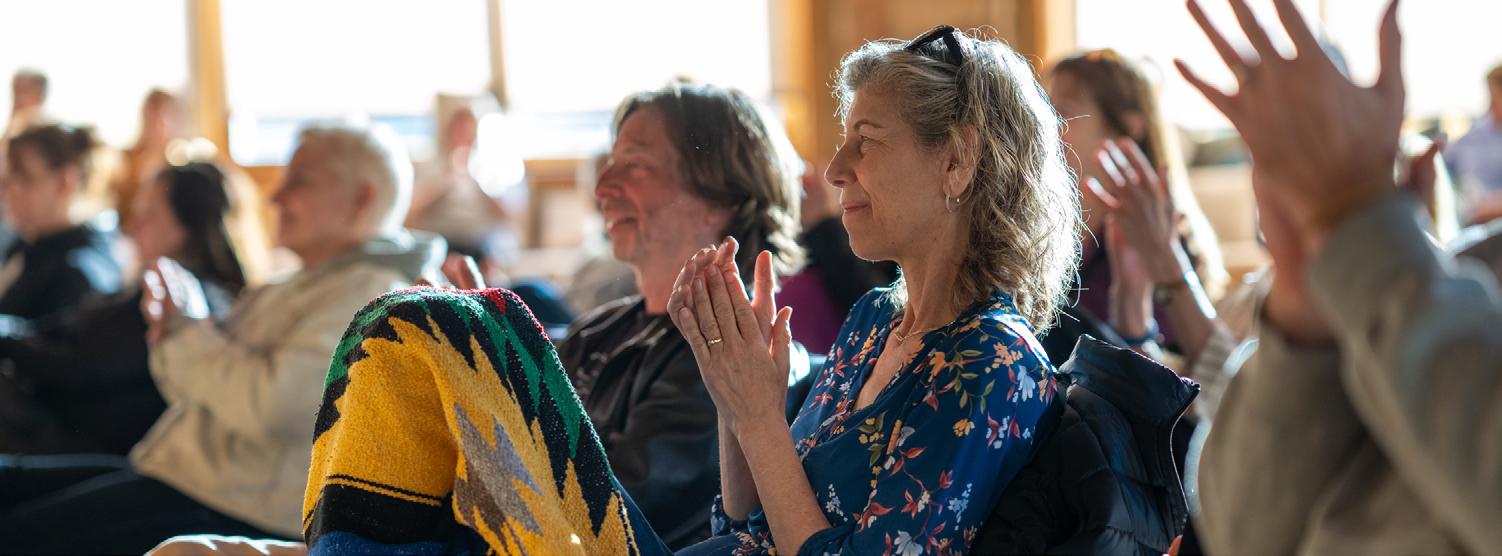
Discover the magic of nature’s stillness and renewal at Rancho La Puerta, the world’s best destination spa. Enjoy golden hour hikes, indulge in healing massages, and savor nourishing farm-fresh cuisine. Bask in the beauty of breathtaking natural surroundings. Retreats are available for 3, 4, and 7 nights.
Experience our summer music weeks, where music takes center stage. Folk Music Week | June 14 – 21, 2025
Amber Rubarth Singer & Songwriter
Chris Pierce
Artist, Activist, & Storyteller
Jake Blount
Artist, Multi-Instrumentalist, & Storyteller
Larissa Maestro
Artist & Multi-Instrumentalist ... and more to be announced!


Jazz Music Week | Aug. 23 – 30, 2025
Sean Jones Trumpet & Curator Billy Childs Piano Ben Williams Bass
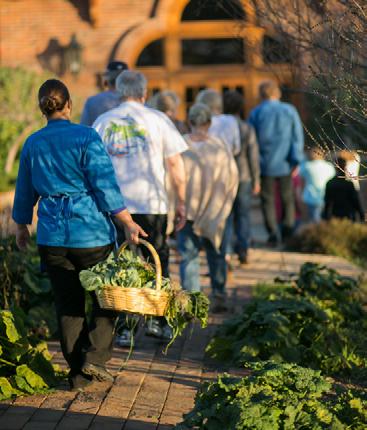




Cabrillo Festival of Contemporary Music cabrillomusic.org
Santa Cruz, CA
July 27-August 10
Carmel Bach Festival bachfestival.org
Carmel-By-The-Sea, CA
July 12-26
La Jolla Music Society SummerFest
TheConrad.org
La Jolla, CA
July 25-August 23


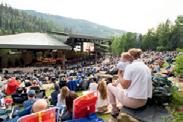
Bravo! Vail Music Festival
BravoVail.org
Vail, CO
June 19-July 31

Colorado Music Festival coloradomusicfestival.org
Boulder, CO
July 3-August 3
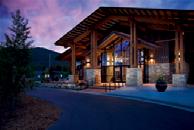
Mainly Mozart All-Star Orchestra Festival mainlymozart.org/allstar
San Diego, CA
June 18-28

Music@Menlo Chamber Music Festival and Institute musicatmenlo.org
Atherton, CA
July 18-August 9
Strings Music Festival stringsmusicfestival.com
Steamboat Springs, CO
June 27-August 24

Sun Valley Music Festival svmusicfestival.org
Sun Valley, ID
July 28-August 21



Chamber Music Northwest cmnw.org
Portland, OR
June 28-July 27
Oregon Bach Festival OregonBachFestival.org
Eugene, OR June 27-July 13

Seattle Chamber Music Society Summer Festival seattlechambermusic.org
Seattle, WA
July 6-August 1

Santa Fe Chamber Music Festival santafechambermusic.org
Santa Fe, NM
July 13-August 18
Grand Teton Music Festival gtmf.org
Jackson Hole, WY July 3-August 23


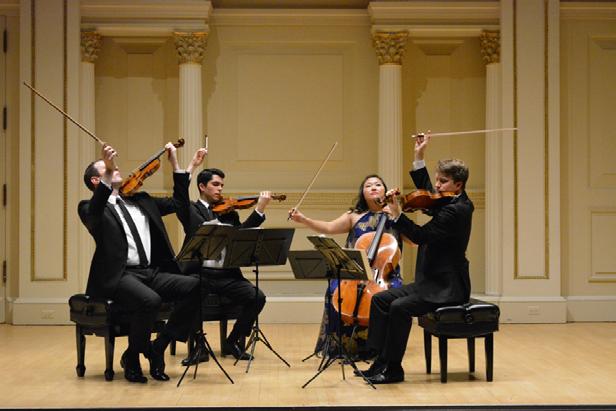
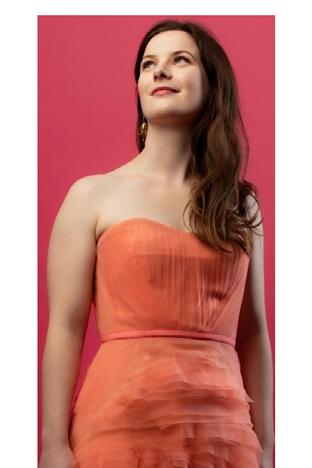

LA JOLLA MUSIC SOCIETY
JULY 25–AUGUST 23
Four weeks of unforgettable musical experiences await this summer at The Conrad. Classical musicians from all over the world are coming to La Jolla for four exciting weeks of performances. Don't miss one of La Jolla's biggest events of the year!
Explore the Festival and Purchase Packages at TheConrad.org/SummerFest
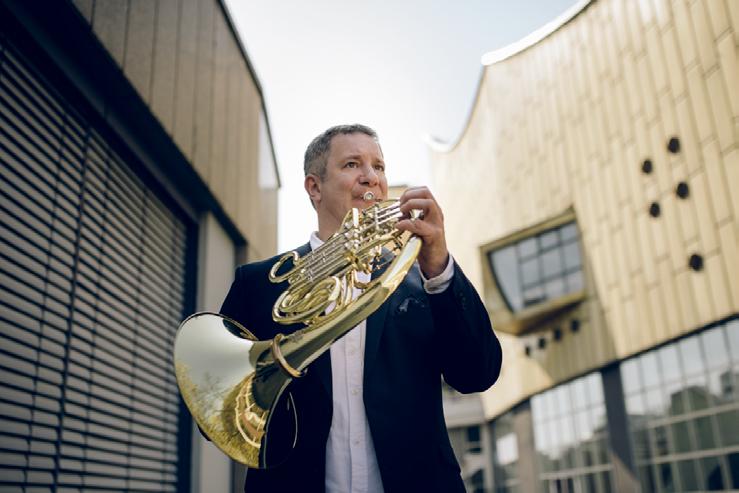

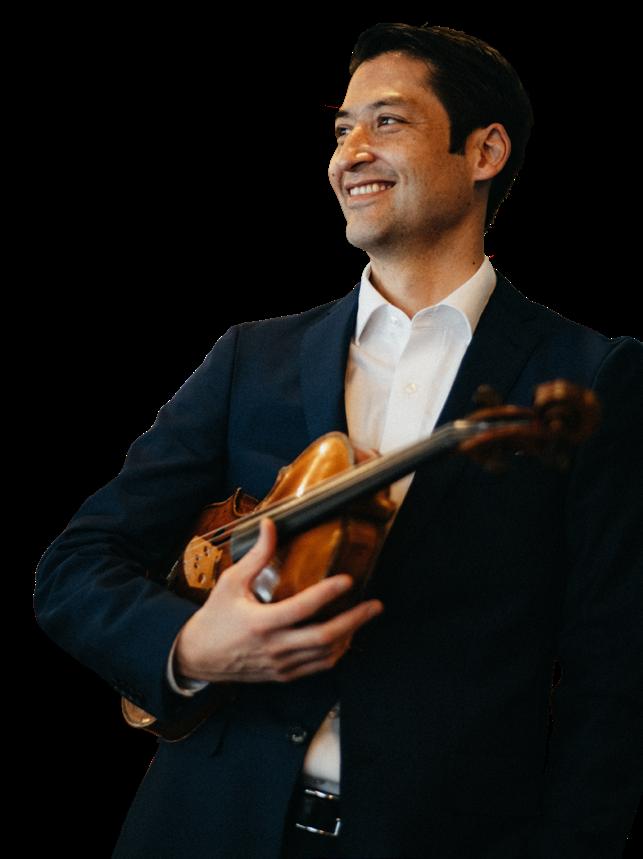





Edward A. Dennis, PhD Chairman
Mary F. Berglund, PhD Treasurer
Peter C. Farrell, PhD, DSc Secretary
Charles G. Cochrane, MD
Michael P. Coppola, MD
Anthony DeMaria, MD
Sir Neil Douglas, MD, DSc, FRCPE
Klaus Schindhelm, BE PhD
Jonathan Schwartz, MD
Kristi Burlingame Executive Director


"Candor is La Jolla's hidden gem!"
Brian L. — Tripadvisor


